Honey
How to submit an article:
- Registered users can submit any published journal article that has a unique DOI (Digital Object Identifier) name or link to Research Hub.
- For example, you can paste the full DOI link:
https://doi.org/10.1109/5.771073or just the DOI name:10.1109/5.771073into the field above and click submit. - The person who is first to submit a valid article to Research Hub will forever be credited for it, and every article submission earns you +6 Research Points.
Related Topics
Published research studies are articles that present the findings of original research that has undergone a peer-review process and has been made publicly available in scholarly journals, books or other media.

Manuka Honey Inhibits Human Breast Cancer Progression in Preclinical Models
2024 Jul 22 Nutrients Márquez-Garbán DC, Yanes CD, Llarena G, Elashoff D, Hamilton N, Hardy M, et al.
Animal Study Experimental Study Honey Breast CancerManuka honey has demonstrated the potential to inhibit the proliferation of human breast cancer cells and stimulate apoptosis in these cells.
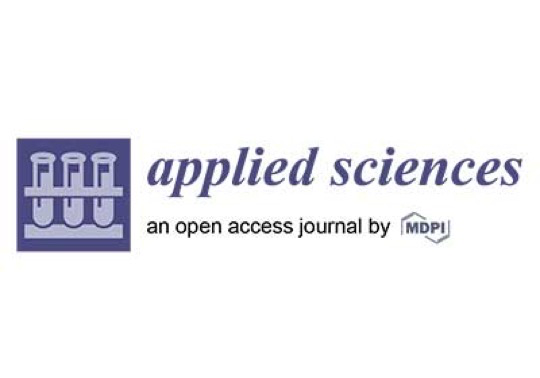
Honey Therapy in Diabetic Foot Ulcers: A Promising Strategy for Effective Wound Healing
2023 Nov 29 Applied Sciences Bezerra A, Fonseca H, Rodrigues F, Delerue-Matos C, Gouvinhas I, Garcia J
Review Article Wound HealingHoney accelerates the healing of diabetic foot ulcers, reduces wound size, and lowers the rates of amputation or hospitalisation, making it a cost-effective and safe treatment.

A Comprehensive Review of the Effect of Honey on Human Health
2023 Jul 06 Nutrients Palma-Morales M, Huertas JR, Rodríguez-Pérez C
Review Article HoneyHoney intake has observed beneficial effects on various health aspects like cardiovascular, metabolic risk factors, and wound healing, primarily replacing other sweeteners.
Revolutionizing the Use of Honeybee Products in Healthcare: A Focused Review on Using Bee Pollen as a Potential Adjunct Material for Biomaterial Functionalization
2023 Jul 04 Journal of Functional Biomaterials Sanyal A, Ghosh A, Roy C, Mazumder I, Marrazzo P
The study concludes that incorporating bee pollen into biomaterials can enhance their biocompatibility and confer anti-inflammatory, antimicrobial, and antioxidant effects, which may have potential applications in tissue healing.
Review Article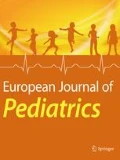
Honey for acute cough in children — a systematic review
2023 Jun 25 European Journal of Pediatrics Kuitunen I, Renko M
Systematic Review CoughHoney potentially has superior results than cough medication or placebo in curtailing symptoms and enhancing sleep in children with acute cough.
Research insights are moderated by the Research Hub team and offer an at-a-glance overview of interesting research findings.

2024 Nutrients
Manuka honey has demonstrated the potential to inhibit the proliferation of human breast cancer cells and stimulate apoptosis in these cells.
Animal Study Breast Cancer
Manuka Honey Inhibits Human Breast Cancer Progression in Preclinical Models
Márquez-Garbán DC, Yanes CD, Llarena G, Elashoff D, Hamilton N, Hardy M, et al.

2023 Applied Sciences
Honey accelerates the healing of diabetic foot ulcers, reduces wound size, and lowers the rates of amputation or hospitalisation, making it a cost-effective and safe treatment.
Review Article Wound Healing
Honey Therapy in Diabetic Foot Ulcers: A Promising Strategy for Effective Wound Healing
Bezerra A, Fonseca H, Rodrigues F, Delerue-Matos C, Gouvinhas I, Garcia J

2023 Nutrients
Honey intake has observed beneficial effects on various health aspects like cardiovascular, metabolic risk factors, and wound healing, primarily replacing other sweeteners.
Review Article
A Comprehensive Review of the Effect of Honey on Human Health
Palma-Morales M, Huertas JR, Rodríguez-Pérez C

2023 European Journal of Pediatrics
Honey potentially has superior results than cough medication or placebo in curtailing symptoms and enhancing sleep in children with acute cough.
Systematic Review Cough
Honey for acute cough in children — a systematic review
Kuitunen I, Renko M
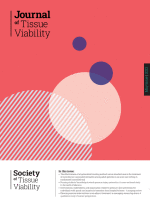
2023 Journal of Tissue Viability
Honey dressing significantly promotes healing and reduces recovery time in managing diabetic foot ulcers.
Systematic Review Diabetic Foot Ulcer Wound Healing
Use of honey in diabetic foot ulcer: Systematic review and meta-analysis
Yildiz Karadeniz E, Kaplan Serin E
Review Articles
Review articles summarise and critically evaluate the current state of research on a specific topic or field by synthesising multiple primary research studies.

Honey Therapy in Diabetic Foot Ulcers: A Promising Strategy for Effective Wound Healing
2023 Nov 29 Applied Sciences Bezerra A, Fonseca H, Rodrigues F, Delerue-Matos C, Gouvinhas I, Garcia J
Review Article Wound HealingHoney accelerates the healing of diabetic foot ulcers, reduces wound size, and lowers the rates of amputation or hospitalisation, making it a cost-effective and safe treatment.

A Comprehensive Review of the Effect of Honey on Human Health
2023 Jul 06 Nutrients Palma-Morales M, Huertas JR, Rodríguez-Pérez C
Review Article HoneyHoney intake has observed beneficial effects on various health aspects like cardiovascular, metabolic risk factors, and wound healing, primarily replacing other sweeteners.
Revolutionizing the Use of Honeybee Products in Healthcare: A Focused Review on Using Bee Pollen as a Potential Adjunct Material for Biomaterial Functionalization
2023 Jul 04 Journal of Functional Biomaterials Sanyal A, Ghosh A, Roy C, Mazumder I, Marrazzo P
The study concludes that incorporating bee pollen into biomaterials can enhance their biocompatibility and confer anti-inflammatory, antimicrobial, and antioxidant effects, which may have potential applications in tissue healing.
Review Article
Honey for acute cough in children — a systematic review
2023 Jun 25 European Journal of Pediatrics Kuitunen I, Renko M
Systematic Review CoughHoney potentially has superior results than cough medication or placebo in curtailing symptoms and enhancing sleep in children with acute cough.

Use of honey in diabetic foot ulcer: Systematic review and meta-analysis
2023 May Journal of Tissue Viability Yildiz Karadeniz E, Kaplan Serin E
Systematic Review Meta-Analysis Diabetic Foot Ulcer Honey Wound HealingHoney dressing significantly promotes healing and reduces recovery time in managing diabetic foot ulcers.
Clinical Trials
Clinical trials are research studies that involve people and are conducted to evaluate the safety and efficacy of new treatments or interventions, such as drugs, medical devices, or behavioural therapies.
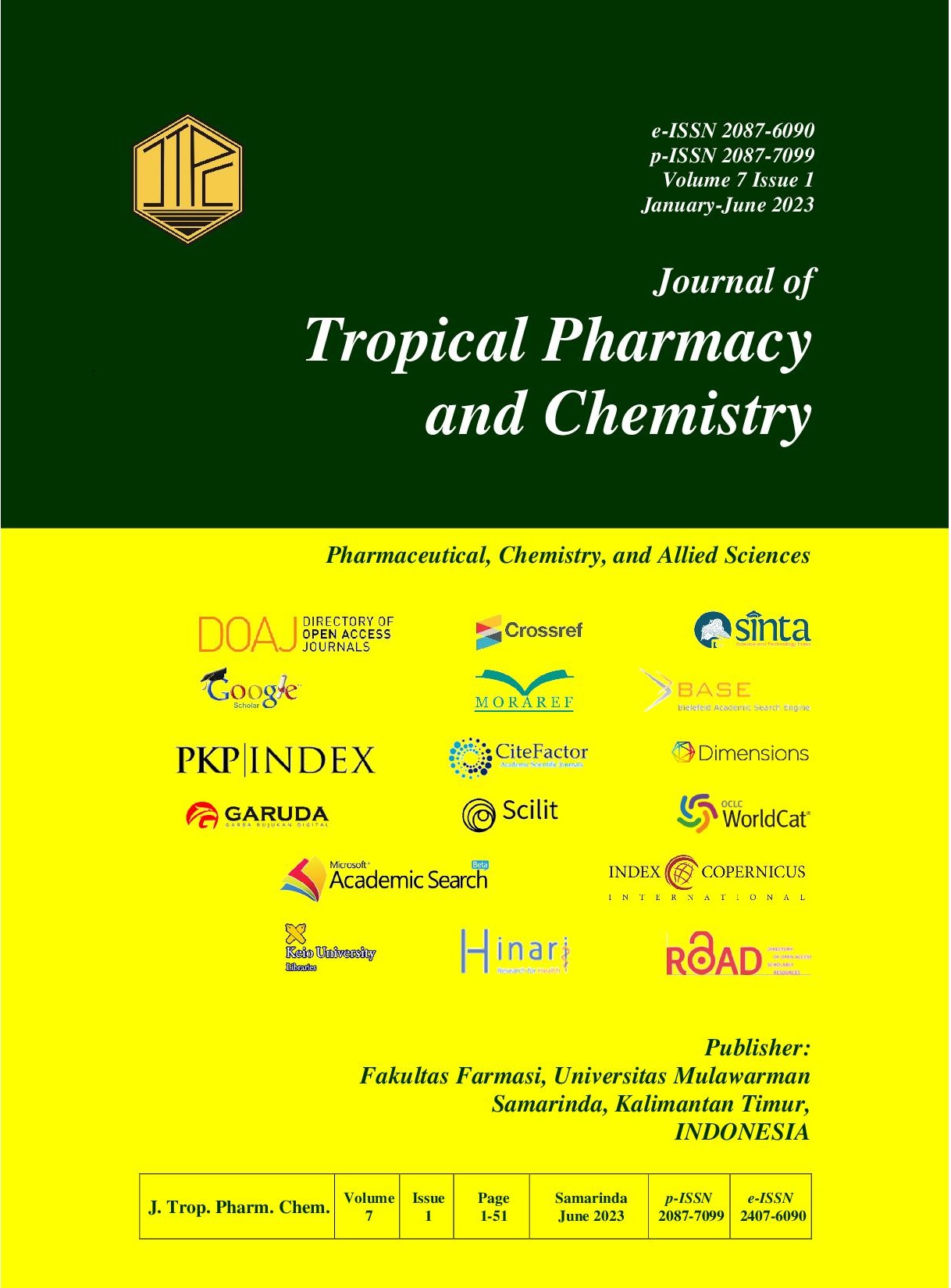
Effect of Combination of Dark Chocolate and Herbal Ingredients for Dysmenorrhea in Late Adolescents
2023 Jan 17 Journal of Tropical Pharmacy and Chemistry Azizah RNP, Anggreini P, Prasetya F
Randomised Controlled Trial Period Pain Dark Chocolate Honey SambilotoThe combination of dark chocolate with herbs could be one of the therapies for period pain.
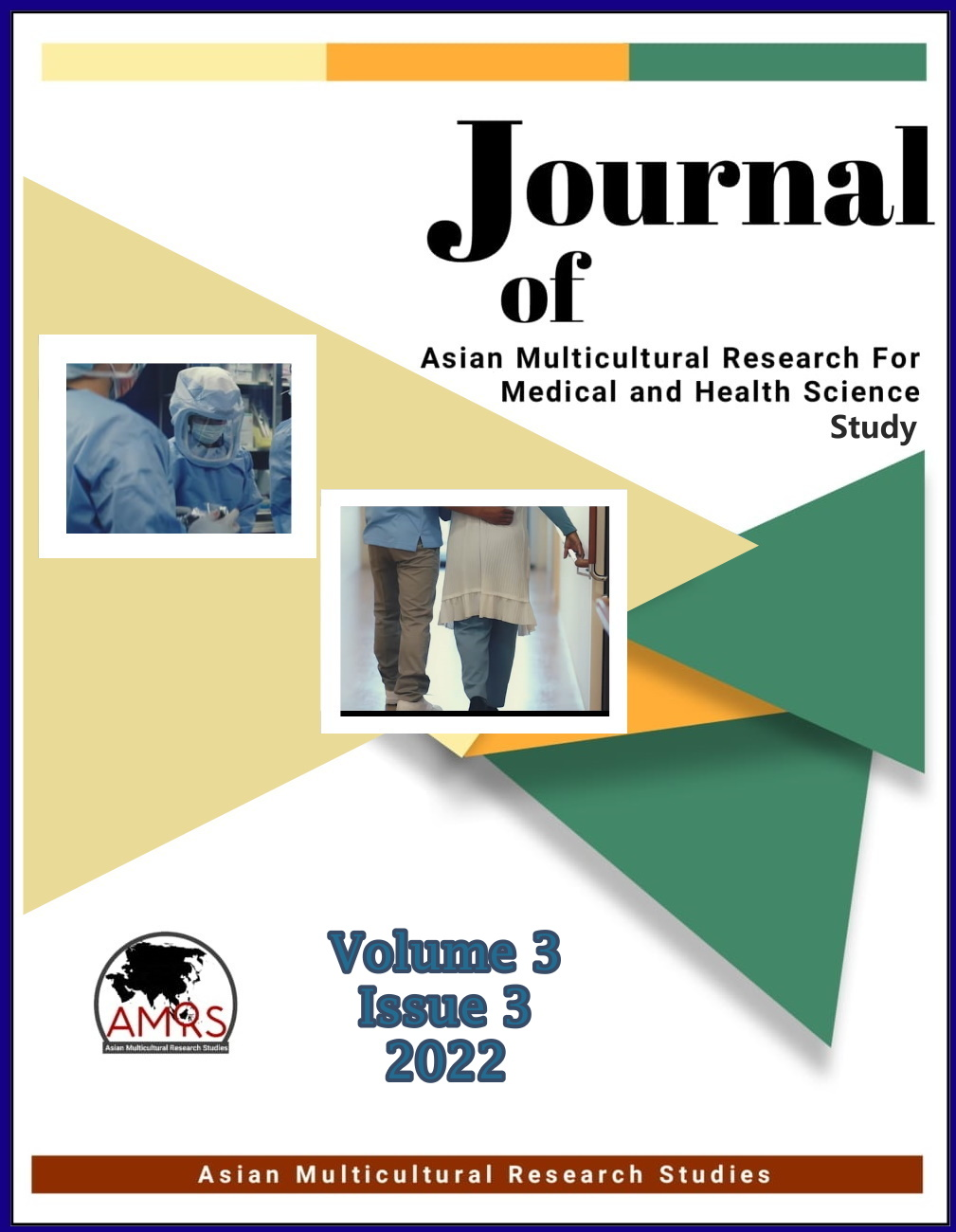
Effect of Honey to Levels Hemoglobin and Levels of 8-Hydroxy-2-Deoxyguanosin (8-Ohdg) in Pregnant Women with Anemia
2022 Aug 04 Journal of Asian Multicultural Research for Medical and Health Science Study A A, Astuti A, Leli L, Saad R
Randomised Controlled Trial Honey Anaemia Pregnancy HaemoglobinHoney, combined with Iron (Fe), effectively enhances hemoglobin levels and reduces oxidative stress markers in anemic expectant mothers.
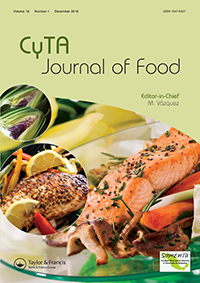
Effect of avocado honey on anthropometric and biochemical parameters in healthy subjects: a pilot randomised controlled trial
2022 Jun 16 CyTA - Journal of Food Hernández Salazar M, Flores A, Ramírez E, Llaca Díaz J, Rodríguez B, Castro H
Randomised Controlled Trial AvocadoAvocado honey, rich in bioactive compounds, can serve as a natural sweetener without negatively impacting anthropometric and biochemical parameters.

The Effect of Compound Honey Syrup on Clinical Manifestation of the Adult Asthma Patients: A Randomized, Double-Blinded, Placebo-Controlled Clinical Trial
2022 Jun 29 Traditional and Integrative Medicine Kaveh S, Kaveh N, Agin K, Sadr S, Choopani R, Karimi Rouzbahani A
Compound honey syrup, when used alongside classic asthma treatment, significantly decreased asthma symptoms such as night symptoms, morning symptoms, activity limitation, shortness of breath, wheezing, and use of Short Acting Beta Agonist (SABA). The intervention group showed greater improvement compared to the control group, suggesting that compound honey syrup can be a safe and effective adjunctive treatment for adult asthma.
Randomised Controlled Trial
Comparison of effects of honey and 0.1% triamcinolone acetonide in the management of recurrent aphthous stomatitis - A randomised, single-blind study
2022 Jan Journal of Indian Academy of Oral Medicine and Radiology Kale IP, Mhapuskar AA, Thakare S, Karmarkar P, Hiremutt DRP, Jadhav A
Honey, a natural anti-inflammatory agent, holds immense potential as an alternative medication for managing recurrent aphthous stomatitis minor ulcers, with better patient compliance compared to 0.1% triamcinolone acetonide.
Randomised Controlled Trial Clinical Study Honey Mouth UlcersStudy Protocols
Published study protocols are detailed plans that outline the objectives, methodology, statistical analyses, and organisation of a research study that have been made publicly available for others to review and use as a reference.
Presentation Slides

Animal Study
Manuka honey has demonstrated the potential to inhibit the proliferation of human breast cancer cells and stimulate apoptosis in these cells.
Márquez-Garbán DC, Yanes CD, Llarena G, Elashoff D, Hamilton N, Hardy M, Wadehra M, McCloskey SA, Pietras RJ

Review Article
Honey accelerates the healing of diabetic foot ulcers, reduces wound size, and lowers the rates of amputation or hospitalisation, making it a cost-effective and safe treatment.
Bezerra A, Fonseca H, Rodrigues F, Delerue-Matos C, Gouvinhas I, Garcia J

Review Article
Honey intake has observed beneficial effects on various health aspects like cardiovascular, metabolic risk factors, and wound healing, primarily replacing other sweeteners.
Palma-Morales M, Huertas JR, Rodríguez-Pérez C

Systematic Review
Honey potentially has superior results than cough medication or placebo in curtailing symptoms and enhancing sleep in children with acute cough.
Kuitunen I, Renko M

Systematic Review
Honey dressing significantly promotes healing and reduces recovery time in managing diabetic foot ulcers.
Yildiz Karadeniz E, Kaplan Serin E
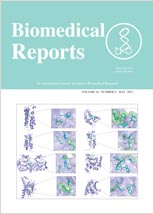
Clinical Study
Consuming a honey-based gel, such as 'Bear Strength honey gel,' led to a notable reduction in diastolic and mean arterial blood pressure, with gender-specific improvements in redox status among healthy adults.
Patouna A, Sevdalis P, Papanikolaou K, Kourti M, Skaperda Z, Jamurtas A, Kouretas D
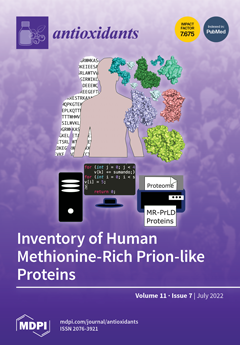
Clinical Study
Preclinical studies related to osteoporosis have reported favorable effects of honey on cortical and trabecular bone microstructure, bone strength, and oxidative stress.
Martiniakova M, Kovacova V, Mondockova V, Zemanova N, Babikova M, Biro R, Ciernikova S, Omelka R

Clinical Study
Clinical studies related to breast cancer have revealed that honey is effective in increasing blood cell counts, interleukin-3 levels, and quality of life.
Martiniakova M, Kovacova V, Mondockova V, Zemanova N, Babikova M, Biro R, Ciernikova S, Omelka R
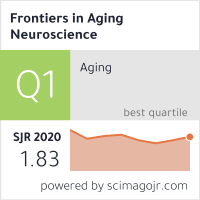
Review Article
Honey exhibits multifaceted benefits for brain health, acting as a memory booster, neuroprotective agent, anti-stress, and anti-nociceptive substance, fostering potential therapeutic applications to enhance overall cognitive well-being.
Zamri NA, Ghani N, Ismail CAN, Zakaria R, Shafin N

Randomised Controlled Trial
The combination of dark chocolate with herbs could be one of the therapies for period pain.
Azizah RNP, Anggreini P, Prasetya F
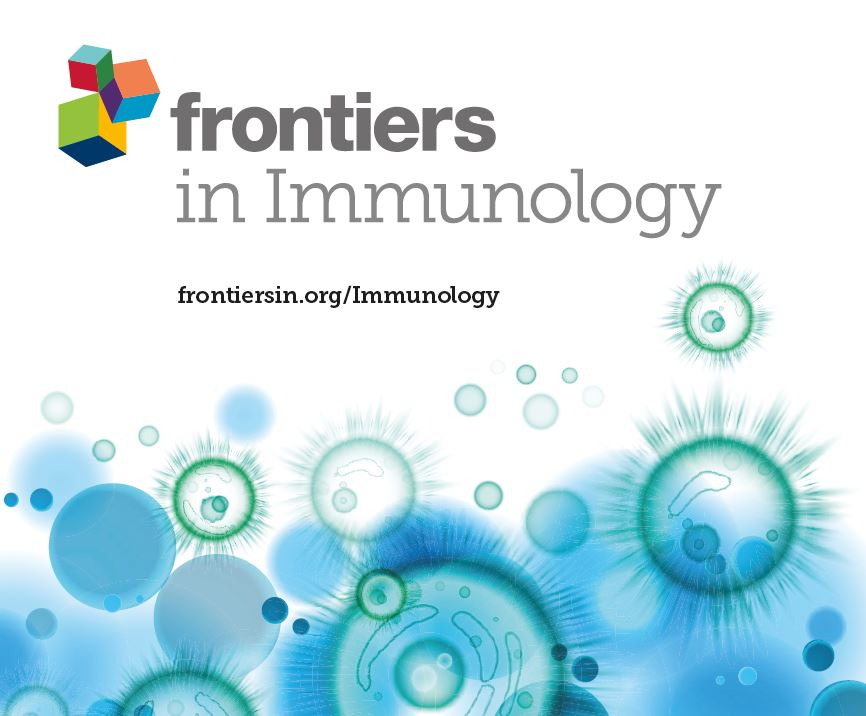
Network Pharmacology
Manuka honey exhibits a dual role in immune modulation, triggering a pro-inflammatory response by elevating cytokine expression and neutrophil recruitment via TLR signaling, while also influencing the phenotypic and functional maturation of macrophages.
Masad RJ, Nasser RA, Bashir G, Mohamed YA, Al-Sbiei A, Al-Saafeen BH, Fernandez-Cabezudo MJ, Al-Ramadi BK
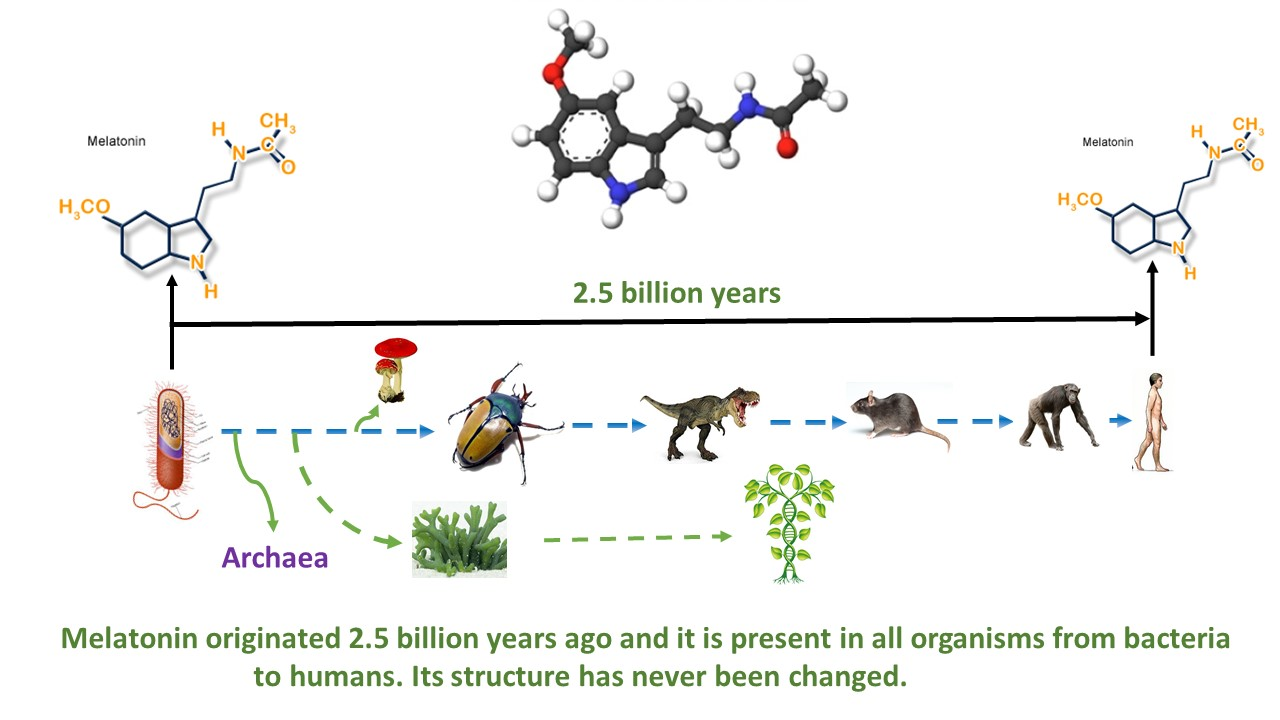
Review Article
Recent revelations of L-DOPA, dopamine, 5-hydroxytryptophan, tryptamine, serotonin, N-acetylserotonin, melatonin, 2-hydroxymelatonin, AFMK, AMK, and vitamin D3 derivatives in honey expand its health benefits.
Kim TK, Fabisiak A, Brzeminski P, Reiter RJ, Slominski AT

Network Pharmacology
Kelulut honey, either alone or in combination with metformin or clomiphene, can alleviate oxidative stress and reproductive and metabolic abnormalities in rats with polycystic ovary syndrome.
Kamal DAM, Ibrahim SF, Ugusman A, Mokhtar MH
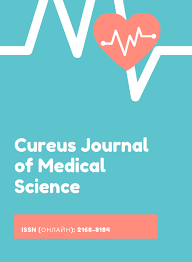
Systematic Review
Honey is effective in treating coughs in children above 12 months.
Mashat GD, Hazique M, Khan KI, Ramesh P, Kanagalingam S, Ul Haq Z, Victory Srinivasan N, Khan AI, Khan S
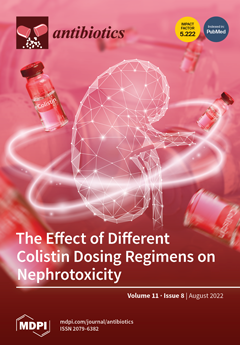
Network Pharmacology
Fresh raw wildflower honey, particularly at concentrations of 10–30%, exhibit comparable efficacy to manuka honey in inhibiting antibiotic-resistant "superbugs" implicated in wound infections, offering a potentially cost-effective alternative for wound care in the United States.
Hewett SR, Crabtrey SD, Dodson EE, Rieth CA, Tarkka RM, Naylor K

Review Article
Depression, a prevalent and debilitating disorder, necessitates novel treatments beyond conventional drugs. Stingless bee honey, rich in antioxidants, emerges as a potential antidepressant candidate, explored comprehensively through monoamine, inflammatory, and neurotrophin hypotheses.
Zakaria FH, Samhani I, Mustafa MZ, Shafin N

Randomised Controlled Trial
Honey, combined with Iron (Fe), effectively enhances hemoglobin levels and reduces oxidative stress markers in anemic expectant mothers.
A A, Astuti A, Leli L, Saad R

Review Article
Honey, owing to its bioactive compounds, demonstrates potential in treating COVID-19 symptoms by reducing oxidative damage and enhancing the immune system.
Soares S, Bornet M, Grosso C, Ramalhosa MJ, Gouvinhas I, Garcia J, Rodrigues F, Delerue-Matos C

Randomised Controlled Trial
Avocado honey, rich in bioactive compounds, can serve as a natural sweetener without negatively impacting anthropometric and biochemical parameters.
Hernández Salazar M, Flores A, Ramírez E, Llaca Díaz J, Rodríguez B, Castro H
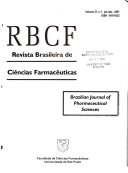
Review Article
High doses of vitamin C, vitamin D supplementation and natural honey can potentially decrease fatalities and support the management of COVID-19.
Rabby MII, Hossain F, Islam MA, Islam AKMS, Akhi IJ, Akter F
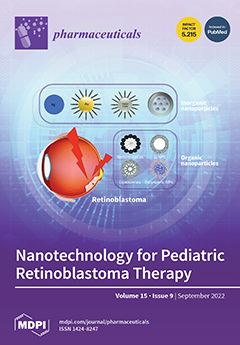
Randomised Controlled Trial
Medical-grade honey outperforms conventional treatment in healing cold sores, reducing healing time and alleviating associated symptoms like pain and itching.
Naik PP, Mossialos D, Wijk B, Novakova P, Wagener FADTG, Cremers NAJ

Clinical Study
Consuming soymilk-honey fermented with a specific type of probiotic significantly reduces osteocalcin levels, which may impact bone health in postmenopausal women.
Desfita S, Sari W, Yusmarini Y, Pato U, Zakłos-Szyda M, Budryn G
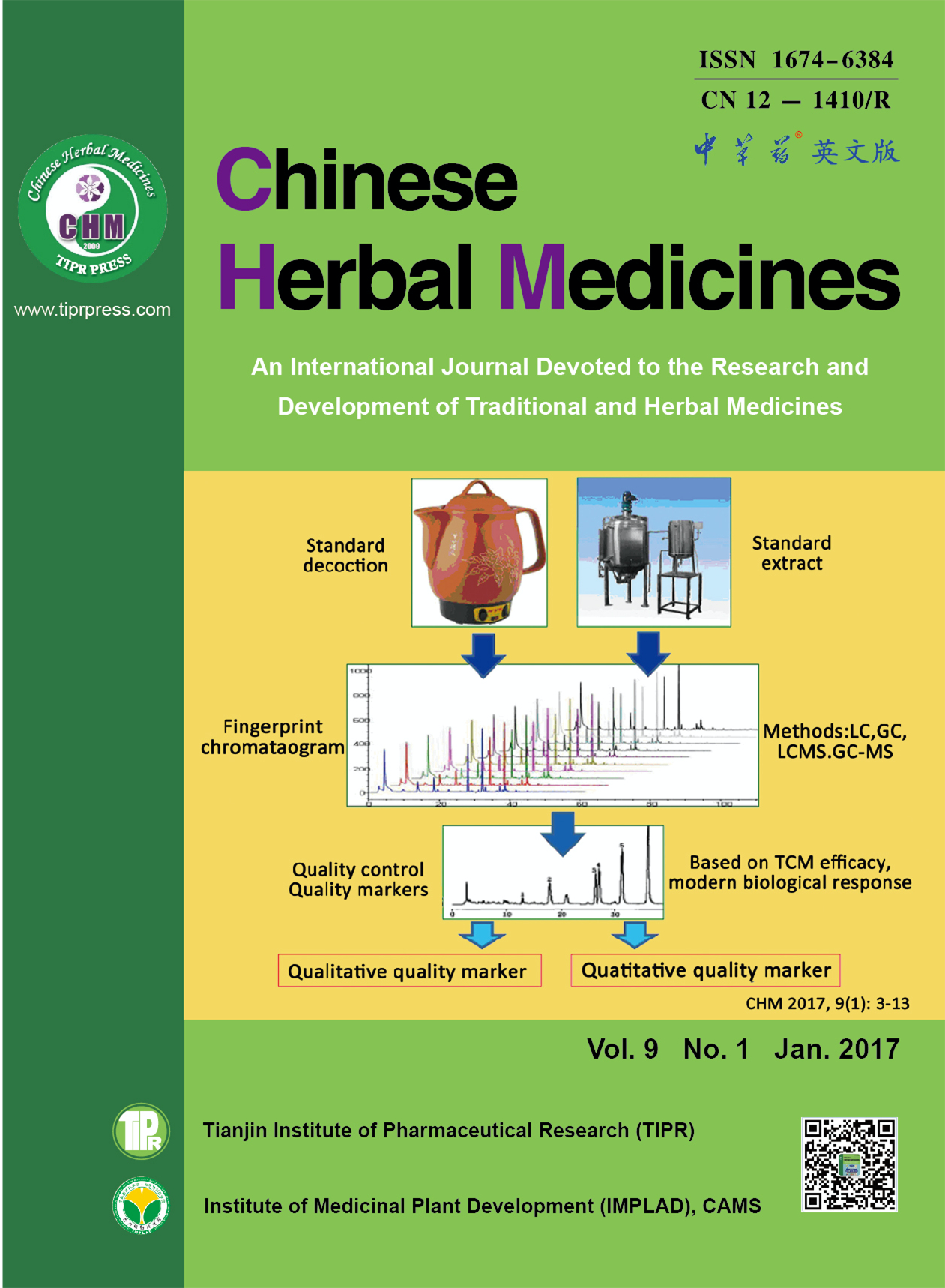
Network Pharmacology
Honeysuckle extract could provoke anaphylaxis and specific ingredients in honeysuckle potentially trigger this reaction.
Feng Y, Qin G, Jing Z, Wang Y, Zhou Y

Review Article
In reproductive health, honey can improve infertility, protect the postmenopausal reproductive tract, prevent toxic effects, maintain sperm quality by restoring testosterone levels and treat vulvovaginal candidiasis infections.
Zaid SSM, Ruslee SS, Mokhtar MH

Review Article
Bee honey and propolis could have potential beneficial effects as supporting treatments for COVID-19, enhancing immunity and inhibiting viral activity.
Ali AM, Kunugi H

Systematic Review
Current evidence shows that short-term honey supplementation following surgical or physiological menopause exerts an oestrogenic, antioxidant and anti-inflammatory effect on the female reproductive system.
Ismail NH, Ibrahim SF, Jaffar FHF, Mokhtar MH, Chin KY, Osman K

Review Article
Honey, traditionally a food item, exhibits therapeutic properties—anti-microbial, anti-inflammatory, anti-cancer, and wound healing—showing promise in managing and preventing allergic diseases, as supported by scientific evidence and clinical studies.
Aw Yong PY, Islam F, Harith HH, Israf DA, Tan JW, Tham CL
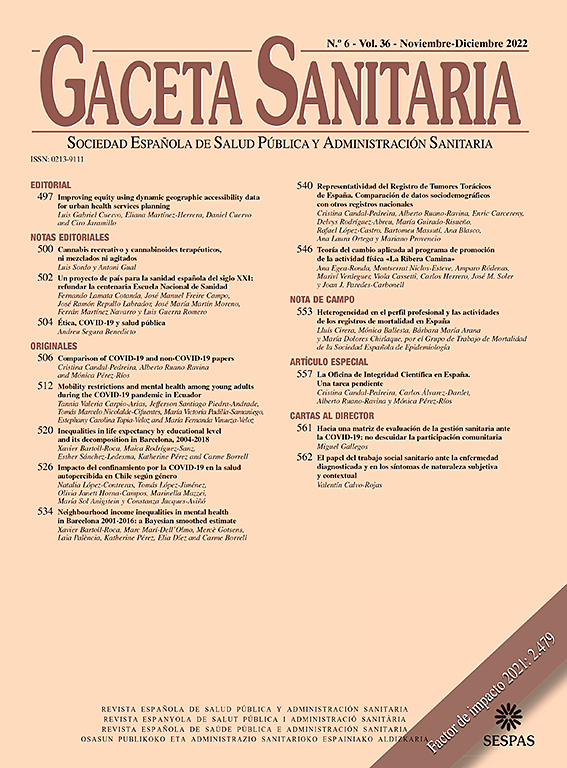
Experimental Study
Ginger honey supplementation does not reduce cortisol levels, however, it significantly increases glutathione and estrogen levels in test mice.
Usman AN, Raya I, Yasmin R, Aliyah , Dirpan A, Arsyad A, Permatasari AE, Sumidarti A, Umami N, Emmasitah

Review Article
Honey's phytochemical components and bioactive compounds have potential antiviral effects, potentially making it an effective natural product against COVID-19.
Al-Hatamleh MAI, Hatmal MM, Sattar K, Ahmad S, Mustafa MZ, Bittencourt MDC, Mohamud R

Randomised Controlled Trial
The use of ginger, chamomile, and honey significantly diminished the intensity of dysmenorrhea pain as compared to the use of mefenamic acid.
Shabani F, Chabra A, Vakilian K, Bioos S, Bozorgi M, Ayati MH, Nejatbakhsh F
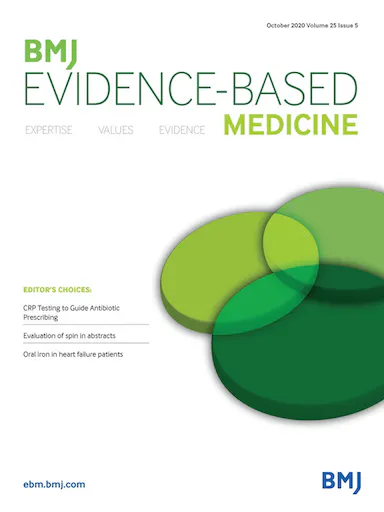
Systematic Review
Honey can be used as an alternative to antibiotics by clinicians who wish to offer treatment for upper respiratory tract infections, which may help to combat antimicrobial resistance.
Abuelgasim H, Albury C, Lee J

Systematic Review
Honey is more effective than usual care alternatives for improving upper respiratory tract infection symptoms, particularly cough frequency and cough severity.
Abuelgasim H, Albury C, Lee J
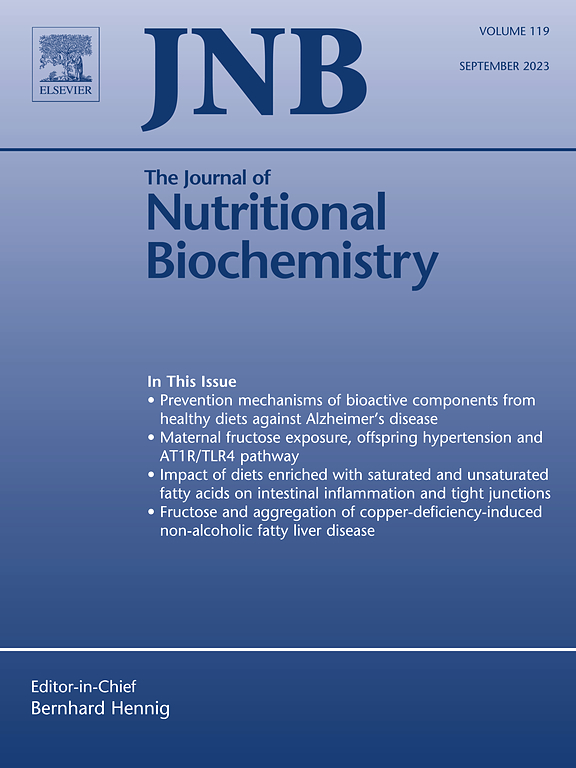
Review Article
Honey, with its variable composition based on botanical origin, exhibits antioxidant and anti-inflammatory properties, suggesting its potential efficacy in managing obesity-related dysfunctions, including neurodegeneration, through improved glycemic control and lipid profile.
Terzo S, Mulè F, Amato A

Experimental Study
Honey contains 20(S)-Hydroxyvitamin D3 (20(OH)D3) and its derivatives, including 20(OH)-7DHC, 25(OH)D3, and 1,25(OH)2D3, indicating their production in bees and suggesting potential health implications.
Kim TK, Atigadda V, Brzeminski P, Fabisiak A, Tang EKY, Tuckey RC, Slominski AT

Experimental Study
We determined the concentration of 20(OH)D3 in honey to be 0.26 µg/g, corresponding to approximately 10 IU/g.
Kim TK, Atigadda V, Brzeminski P, Fabisiak A, Tang EKY, Tuckey RC, Slominski AT

Systematic Review
Honey exhibits significant anti-Helicobacter pylori activity, with at least 10% concentration proving effective in inhibiting gastric and duodenal ulcers, highlighting its therapeutic potential.
Adam Q, Annuar F, Alfizah H, Mohd Fahami NA
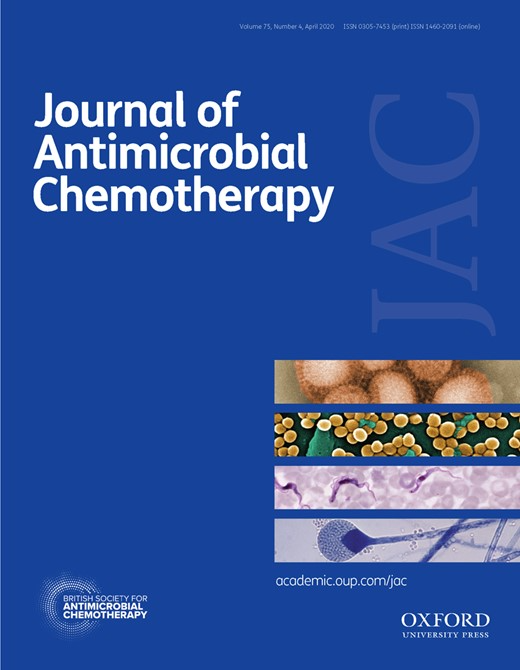
Systematic Review
Honey showed a significant antimicrobial activity against all targeted periopathogen and could be effective in the treatment of periodontal disease.
Hbibi A, Sikkou K, Khedid K, El Hamzaoui S, Bouziane A, Benazza D

Review Article
Honey can protect the bone via its antioxidant and anti-inflammatory properties, primarily through its polyphenol content that acts upon several signalling pathways, leading to bone anabolic and antiresorptive effects.
Kamaruzzaman MA, Chin KY, Mohd Ramli ES
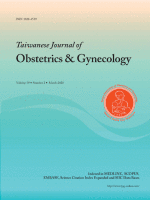
Cohort Study
Pregnant women's stature, BMI, sedentary lifestyle, as well as the regular consumption of certain foods, influence the formation and severity of striae gravidarum.
Ren P, Zhao W, Dai X, Wang X, Yu J, Yuan Y, Wu Y
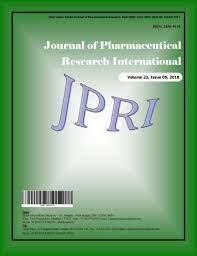
Randomised Controlled Trial
Administration of honey saffron syrup reduces the length of all stages of labor in nulliparous women.
Ghaderi S, Zaheri F, Nouri B, Shahoei R

Review Article
Honey, comprising mainly carbohydrates, particularly fructose and glucose, demonstrates potential performance benefits and immunological advantages when consumed around exercise, suggesting a role in exercise nutrition.
Hills , Mitchell , Wells , Russell

Systematic Review
Oral administration of honey is associated with increased serum testosterone levels in males, supported by in vivo studies suggesting mechanisms involving luteinizing hormone production, Leydig cell viability, oxidative damage reduction, enhanced StAR gene expression, and aromatase activity inhibition.
Banihani SA

Systematic Review
The collective evidence, which is mainly based on in vivo system studies, reveals that oral administration of honey increases serum testosterone level in males.
Banihani SA
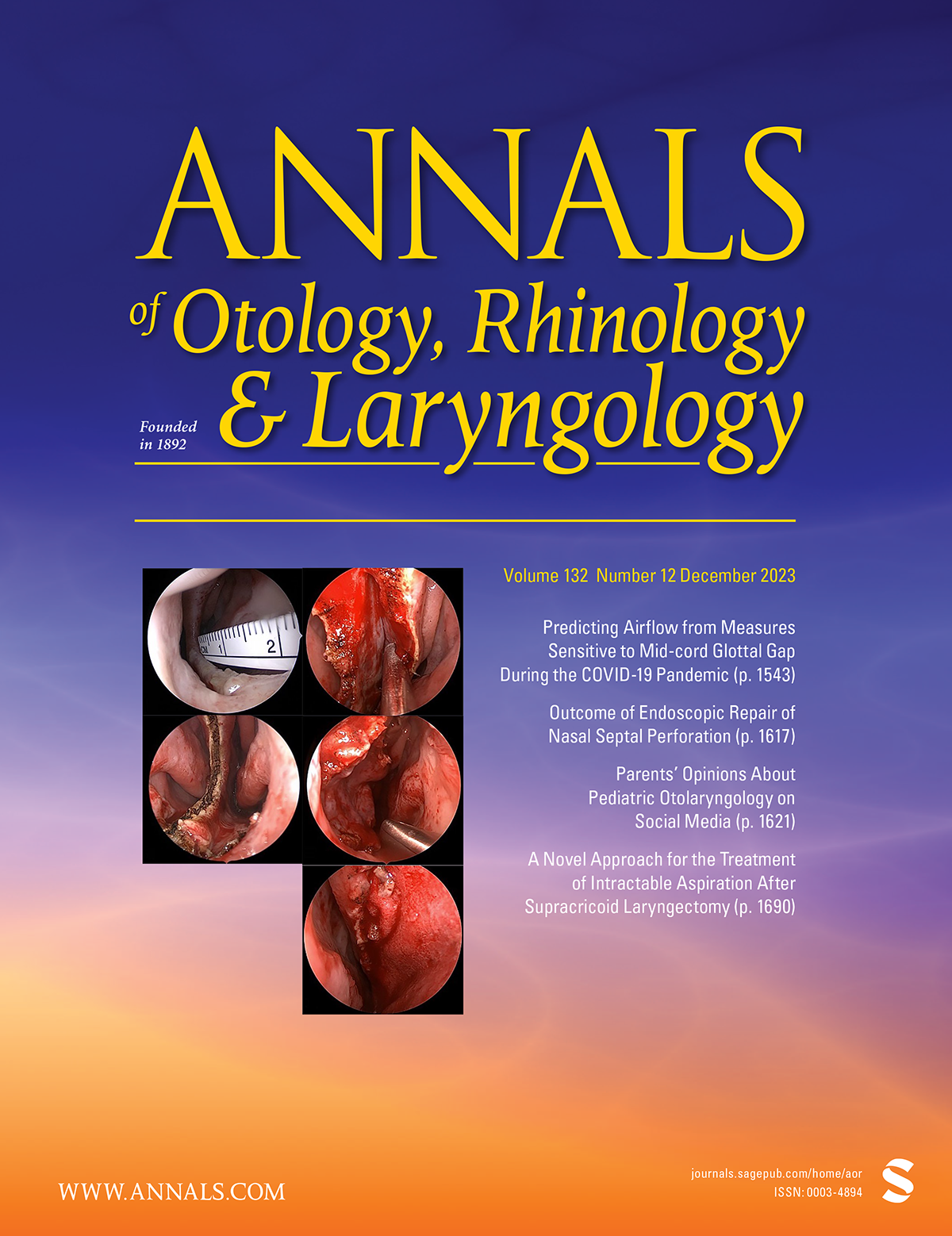
Review Article
Honey exhibits efficacy in otolaryngology, supported by high-quality evidence, particularly in preventing oral mucositis in cancer patients, alleviating pediatric cough, and managing post-tonsillectomy pain.
Tharakan T, Bent J, Tavaluc R

Review Article
Moderate‐certainty evidence showed that honey probably reduces cough duration to a greater extent than salbutamol or placebo. Honey group participants were first to get total relief of cough compared to salbutamol or placebo.
Oduwole O, Udoh EE, Oyo-Ita A, Meremikwu MM
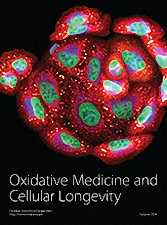
Review Article
Honey, a natural food supplement, emerges as a potent therapeutic antioxidant with diverse medicinal effects, including wound healing, antibacterial, anti-inflammatory, antifungal, antiviral, and antidiabetic properties, suggesting its potential as a novel antioxidant in managing oxidative stress-related diseases.
Ahmed S, Sulaiman SA, Baig AA, Ibrahim M, Liaqat S, Fatima S, Jabeen S, Shamim N, Othman NH

Review Article
Honey may be used as a potential antidiabetic agent that has the potential to reduce the complications of diabetes.
Bobiş O, Dezmirean DS, Moise AR
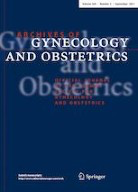
Randomised Controlled Trial
Honey has been shown to provide similar pain relief to traditional medication mefenamic acid for women with primary dysmenorrhea, with fewer side effects.
Amiri Farahani L, Hasanpoor-Azghdy SB, Kasraei H, Heidari T

Review Article
Honeybee products like honey, propolis, and royal jelly have demonstrated potential benefits in treating metabolic diseases, cancers, and other illness types.
Pasupuleti VR, Sammugam L, Ramesh N, Gan SH
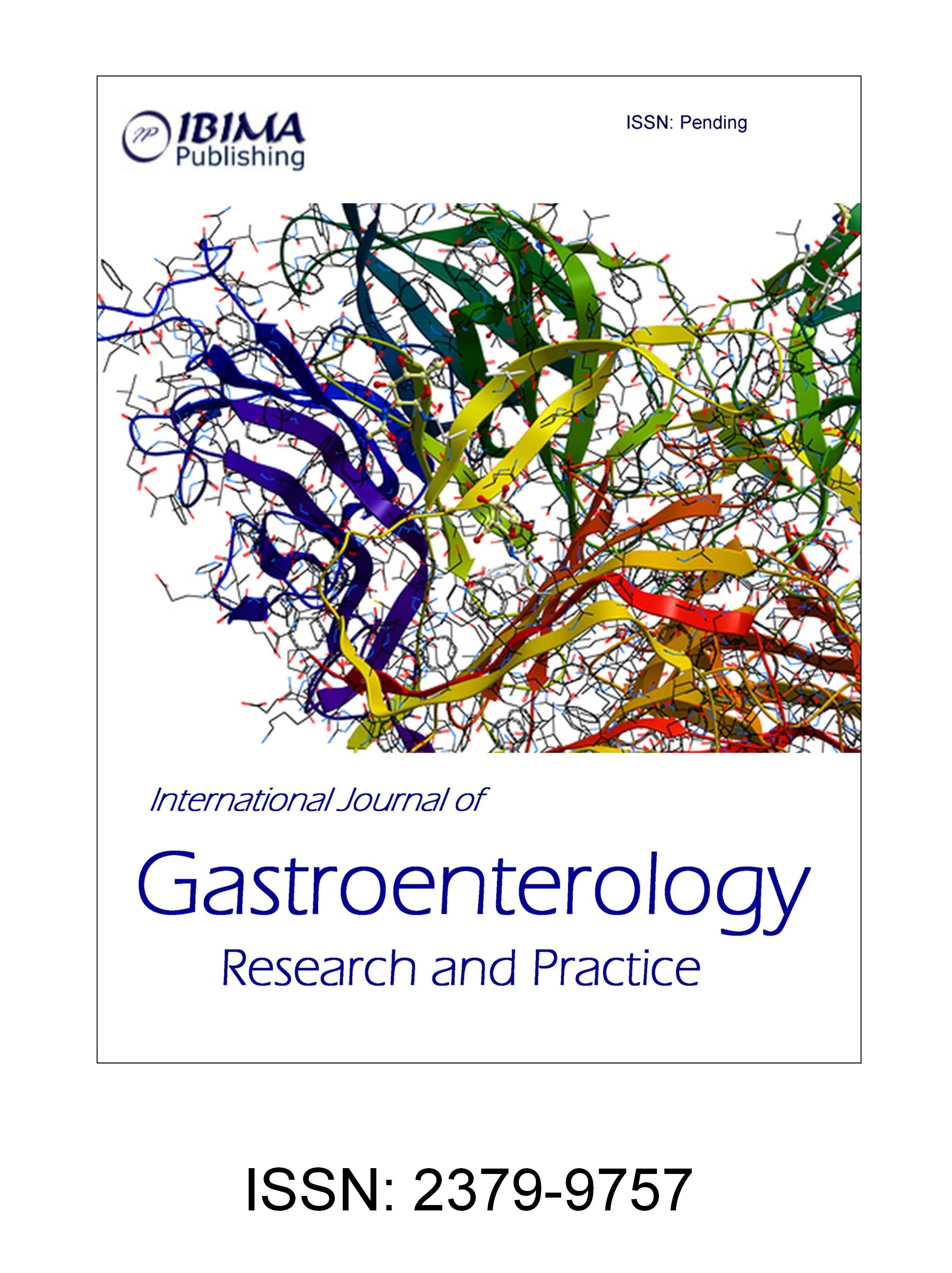
Cohort Study
Regular consumption of honey and yogurt may lower the prevalence of H. pylori infection and reduce the virulence of strains.
Yordanov D, Boyanova L, Markovska R, Ilieva J, Andreev N, Gergova G, Mitov I
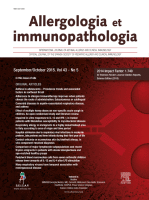
Review Article
Milk and honey mixture seems to be at least as effective as dextromethorphan and levodropropizine, the most prescribed over-the-counter antitussives in Italy, in non-specific acute cough in children.
Miceli Sopo S, Greco M, Monaco S, Varrasi G, Di Lorenzo G, Simeone G

Randomised Controlled Trial
Bee pollen and honey may alleviate menopausal symptoms in breast cancer patients undergoing antihormonal treatment.
MÜNSTEDT KARSTEN, VOSS BENJAMIN, KULLMER UWE, SCHNEIDER URSULA, HÜBNER JUTTA
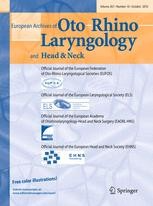
Systematic Review
Administering honey postoperatively can significantly lessen pain and foster improved wound healing following tonsillectomy.
Hwang SH, Song JN, Jeong YM, Lee YJ, Kang JM
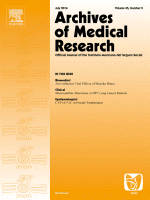
Network Pharmacology
Manuka honey exhibits significant anti-influenza viral activity, inhibiting replication with virucidal effects. Combining manuka honey with existing drugs enhances their efficacy, suggesting its medicinal potential.
Watanabe K, Rahmasari R, Matsunaga A, Haruyama T, Kobayashi N

Network Pharmacology
Honey, in general, and particularly manuka honey, has potent inhibitory activity against the influenza virus, demonstrating a potential medicinal value.
Watanabe K, Rahmasari R, Matsunaga A, Haruyama T, Kobayashi N
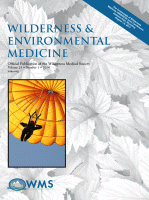
Review Article
Honey has shown to be a safe and occasionally superior treatment for various wounds compared to current treatments, even in wilderness environments.
Stewart JA, McGrane OL, Wedmore IS

Randomised Controlled Trial
Tualang honey demonstrates efficacy comparable to Tribestan in enhancing sperm parameters among oligospermic males, including concentration, motility, and morphology, with a favorable safety profile.
Ismail SB, Bakar MB, Nik Hussain NH, Norhayati MN, Sulaiman SA, Jaafar H, Draman S, Ramli R, Wan Yusoff WZ

Review Article
Honey proves to be an effective, cost-efficient treatment for diabetic wounds due to its natural properties, including antibacterial activity and control over inflammation.
Alam F, Islam MA, Gan SH, Khalil MI

Experimental Study
Honey, specifically its polyphenols, show promising signs of enhancing memory and counteracting neurodegenerative diseases by reducing oxidative stress and neuroinflammation.
Mijanur Rahman M, Gan SH, Khalil MI
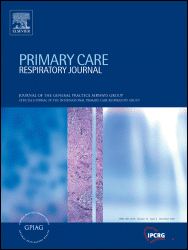
Randomised Controlled Trial
Honey plus coffee, presented as a jamlike paste, emerges as a more effective alternative medicine for persistent post-infectious cough (PPC) compared to systemic steroids, demonstrating significant reduction in cough frequency in a randomized controlled trial.
Raeessi MA, Aslani J, Raeessi N, Gharaie H, Zarchi AAK, Raeessi F
Executive Summary
Write an executive summary in the form of a blog article on the topic of "Research into Chinese medicine treatment for Honey" summarising the research below and using language that can be easily understood by patients and avoiding medical jargon using a professional and caring tone of voice.
Write an executive summary in the form of a blog article on the topic of "Researched Chinese medicine treatments for Honey" summarising the research below in an objective and easy to understand way, and using language that can be easily understood by patients. Group the article into Chinese medicine treatments first, followed by nutrition and other treatments. Avoid using medical jargon and use a professional and caring tone of voice.
Write me a concise but easy to understand executive summary on the topic of "Chinese medicine treatments for Honey" based on the following research that I will give you. Your summary should be 2 paragraphs long in Australian English spelling and include references to the studies.
A Animal Study published in 2024 in the journal Nutrients found that Manuka honey has demonstrated the potential to inhibit the proliferation of human breast cancer cells and stimulate apoptosis in these cells. In the experiment, Manuka honey was applied to three different types of cells: MCF-7 human breast cancer cells, MDA-MB-231 breast cancer cells, and non-malignant human mammary epithelial cells. The concentrations applied ranged from 0.3 to 5.0% to observe different effects. In addition to inhibiting cancer cell proliferation, the honey was tested for its ability to cause apoptosis (cell death) among the MCF-7 cells. It was also compared to the effects of tamoxifen, an antiestrogen medication used in breast cancer treatment. The results showed that Manuka honey was able to significantly inhibit the proliferation of MCF-7 cells, though its effects were less pronounced in the MDA-MB-231 breast cancer cells. The non-malignant cells were not affected. The honey's antitumor activity was comparable to that of tamoxifen. Moreover, Manuka honey stimulated apoptosis in the MCF-7 cells. It was also observed that the honey activated AMPK, which inhibits specific cellular growth signals, and reduced STAT3 levels, a protein often elevated in tumors.
A Review Article published in 2023 in the journal Applied Sciences found that Honey accelerates the healing of diabetic foot ulcers, reduces wound size, and lowers the rates of amputation or hospitalisation, making it a cost-effective and safe treatment. The methodology of the review incorporated studies exploring the effects of honey on wound healing, emphasizing its impact on diabetic foot ulcers (DFUs). Different types of honey and their potential influence on treatment efficacy were considered. The review also scrutinised the mechanisms by which honey promotes wound healing and how honey dressings are utilized in the management of diabetic wounds. Nonetheless, it was noted that few of the studies provided comprehensive data regarding the specific characteristics of the employed honey, affecting the comparison across honey types. The discussion of the results found in most clinical studies indicated that DFUs treated with honey resulted in rapid wound healing, substantial wound contraction, and decreased rates of amputation or hospitalisation. The properties of honey - serving as an effective antibacterial agent against multidrug-resistant bacteria and fostering wound healing through its physical-chemical attributes - were found to be the underlying reasons for these positive outcomes. Furthermore, honey was deemed to be a cost-effective and safe option for managing DFUs.
A Review Article published in 2023 in the journal Nutrients found that Honey intake has observed beneficial effects on various health aspects like cardiovascular, metabolic risk factors, and wound healing, primarily replacing other sweeteners. In this comprehensive review study, the researchers went beyond just looking at one or two aspects of health; instead, they embarked on an ambitious task of reviewing forty-eight clinical trials that were published between 1985 and 2022, involving a total of 3655 subjects. The researchers aimed to critically analyze the effect of honey on multiple health indices, including, but not limited to, cardiovascular and metabolic risk factors, glucose tolerance, mucositis inflicted by chemo-radiotherapy, cough in children, and wound healing. The evaluation and analysis of the data involved a thorough examination of the results of each of the clinical trials, consideration of several potential variables, and detailed cross-study comparisons. This broad and deep investigation allowed the researchers to draw correlations and pinpoint the beneficial influences of honey, considered a nutritious and natural food. The results from these clinical trials saw more beneficial effects on health from honey intake when compared to neutral or negative outcomes. It was most notably effective, particularly when used as a substitute for other sweeteners. The review also pointed out the potential use of honey as a safe adjuvant to be used in combination with drugs for specific illnesses. Confidently stating that honey has clear benefits in the clinical trials analyzed, the researchers fostered a promising narrative for the further exploration and acceptance of honey as a health booster.
A Systematic Review published in 2023 in the journal European Journal of Pediatrics found that Honey potentially has superior results than cough medication or placebo in curtailing symptoms and enhancing sleep in children with acute cough. Methodology: This targeted review leveraged multiple databases, such as PubMed, Scopus, CENTRAL, CINAHL, and Web of Science, to extract relevant trials relating to honey's usage in treating acute child cough. By applying a systematic approach, the emphasis was on randomized controlled trials featuring children. To ensure the results' credibility, payment was done for risk-of-bias as well as the quality of the evidence. The studies were not combined owing to the absence of essential information; instead, conclusions provided a range of noticed effects for principal results. Discussion of results: Following rigorous screening of almost four hundred papers, a select ten were incorporated. Significant variability in biases was noticed, with two studies possessing a high risk-of-bias and six inviting some concerns. The evidence, though of low to very low quality, indicated honey's potential superiority over placebo/no treatment and cough medication, both in reducing cough frequency and improving sleep quality.
A Systematic Review published in 2023 in the journal Journal of Tissue Viability found that Honey dressing significantly promotes healing and reduces recovery time in managing diabetic foot ulcers. For the research methodology, the study used a combination of randomized controlled trials, quasi-experimental, and cross-sectional studies. Only the randomized controlled trials and quasi-experimental studies were chosen for the meta-analysis, while observational studies were subject to a descriptive analysis. In terms of the results discussion, the meta-analysis indicated that using honey as a dressing for diabetic foot ulcers resulted in a reduction in wound recovery time, pain experienced, duration of hospital stay, and an acceleration in wound granulation. Therefore, it was concluded that honey dressing is an effective intervention for accelerating healing in diabetic foot ulcers.
A Clinical Study published in 2023 in the journal Biomedical Reports found that Consuming a honey-based gel, such as 'Bear Strength honey gel,' led to a notable reduction in diastolic and mean arterial blood pressure, with gender-specific improvements in redox status among healthy adults. The study included 20 healthy participants (10 men, 10 women) who incorporated 70g of 'Bear Strength honey gel' into their daily diet for 14 days. Physiological parameters (weight, height, BMI, body fat, waist-to-hip ratio, resting heart rate, and blood pressure) and hematological data were evaluated before and after consumption. Redox biomarkers, including Glutathione (GSH), catalase (CAT), total antioxidant capacity (TAC), protein carbonyls (PCARBS), and thiobarbituric reactive substances (TBARS), were measured. Post-consumption, the honey-based gel showed a significant decrease in diastolic and mean arterial blood pressure, particularly in women. However, no significant changes were observed in other physiological or hematological variables. Notably, GSH levels increased in both genders, TAC increased universally, and TBARS levels decreased in the total group and women. PCARBS levels decreased exclusively in the women's group. These findings highlight the honey-based gel's potential positive impact on blood pressure and redox status, emphasizing gender-specific effects in healthy adults.
A Clinical Study published in 2023 in the journal Antioxidants found that Preclinical studies related to osteoporosis have reported favorable effects of honey on cortical and trabecular bone microstructure, bone strength, and oxidative stress. Honey is able to protect the bone mainly due to antioxidant and anti-inflammatory properties, primarily through its content of polyphenols, which act on several signaling pathways, resulting in anabolic and antiresorptive effects. From the group of polyphenols, the anti-osteoporotic impact of quercetin, kaempferol, and luteolin was recorded. In addition, vitamin D3 and its hydroxyderivatives with antioxidant properties were also detected in honey. Vitamin D3 supplementation was found to have protective effects on the inhibition of bone loss and BMD in both experimental animals and postmenopausal women.
A Clinical Study published in 2023 in the journal Antioxidants found that Clinical studies related to breast cancer have revealed that honey is effective in increasing blood cell counts, interleukin-3 levels, and quality of life. In relation to breast cancer, in vitro experiments revealed the anti-proliferative and pro-apoptotic impact of honey on breast cancer cells, as well as their increased apoptosis. Animal studies have shown that honey reduces the number, growth rate, volume, and tumor weight. Findings from clinical trials reported its immunomodulatory properties showing that honey is effective in increasing leukocyte and platelet counts, IL-3 levels, and quality of life. In this context, the potential role of honey and its oligosaccharides as prebiotics for specific beneficial bacteria might be examined in future clinical studies.
A Review Article published in 2023 in the journal Frontiers in Aging Neuroscience found that Honey exhibits multifaceted benefits for brain health, acting as a memory booster, neuroprotective agent, anti-stress, and anti-nociceptive substance, fostering potential therapeutic applications to enhance overall cognitive well-being. This review scrutinizes 34 original articles exploring the impact of honey on brain health. Honey, traditionally known as a natural sweetener, emerges as a versatile substance with applications in nutrition, health supplementation, and brain health enhancement. The analysis identifies four key benefits: memory enhancement, neuroprotection, stress reduction, and pain alleviation. The review emphasizes the growing interest in understanding the mechanisms that underlie these effects, paving the way for potential therapeutic roles of honey in promoting cognitive well-being. The literature review underscores the significant role of honey in brain health research, shedding light on its diverse benefits, including memory improvement, neuroprotection, stress mitigation, and pain relief. The emphasis on unraveling the underlying mechanisms reflects a broader interest in establishing honey's therapeutic potential for enhancing overall brain health. This comprehensive exploration of honey's effects on cognition opens avenues for developing novel therapeutic strategies harnessing honey's natural properties.
A Randomised Controlled Trial published in 2023 in the journal Journal of Tropical Pharmacy and Chemistry found that The combination of dark chocolate with herbs could be one of the therapies for period pain. This test was conducted on 30 respondents who were divided into three groups, namely the positive control group (K), dark chocolate (C), and a combination of dark chocolate with herbs (C+H). Dark chocolate was combined with herbal ingredients consisting of turmeric, red ginger, moringa, sambiloto extract, and honey as a beverage 250 mL. The study is quantitative research with quasi-experimental method. Pain measurement using the Numeric Rating Scale (NRS) sheet was given before and 2 hours after treatment. The data was analyzed using paired t-test. State the results of the values obtained the combination of dark chocolate and herbs showed a significant reduction in pain before and after treatment (p<0.05).
A Network Pharmacology published in 2022 in the journal Frontiers in Immunology found that Manuka honey exhibits a dual role in immune modulation, triggering a pro-inflammatory response by elevating cytokine expression and neutrophil recruitment via TLR signaling, while also influencing the phenotypic and functional maturation of macrophages. In vitro experiments using RAW 264.7 macrophages demonstrated that 1% Manuka honey significantly upregulated the expression and secretion of pro-inflammatory cytokines, including TNF-α, IL-1β, IL-6, and iNOS, as well as chemokines such as CXCL2 and CCL2. In vivo studies with C57BL/6 mice revealed a robust peritoneal response characterized by increased neutrophil recruitment and phenotypic changes in peritoneal macrophages after intraperitoneal administration of Manuka honey. Notably, this response persisted in TLR4-defective mice, suggesting independence from TLR4 and ruling out LPS contamination. However, the dependence on MyD88 protein, a crucial adaptor in TLR signaling, was evident, shedding light on the immunostimulatory properties of Manuka honey and its potential as an immunomodulatory agent in diverse disorders. The study delineates Manuka honey's immunomodulatory actions, showcasing its pro-inflammatory impact through cytokine release and neutrophil recruitment, independent of TLR4 but reliant on MyD88 signaling. Additionally, the observed phenotypic alterations in macrophages underscore the potential utility of Manuka honey as an immunomodulatory agent across various health conditions, offering insights into its complex yet promising role in immune regulation.
A Review Article published in 2022 in the journal Melatonin Research found that Recent revelations of L-DOPA, dopamine, 5-hydroxytryptophan, tryptamine, serotonin, N-acetylserotonin, melatonin, 2-hydroxymelatonin, AFMK, AMK, and vitamin D3 derivatives in honey expand its health benefits. The identification of L-DOPA, dopamine, 5-hydroxytryptophan, tryptamine, serotonin, N-acetylserotonin, melatonin, 2-hydroxymelatonin, AFMK, AMK, and vitamin D3 derivatives in honey aligns with their presence in insects and plants. Serotonin and melatonin, integral to tryptophan metabolism, serve diverse roles as hormones, neurotransmitters, and antioxidants. Dopamine and tryptamine, essential neurotransmitters, have broad significance across species. The detection of these molecules in honey, a widely consumed health-promoting substance, enhances its beneficial effects on human health. The findings highlight the multifaceted composition of honey, encompassing compounds with recognized roles in neurotransmission, antioxidant activity, and hormonal regulation. The presence of these molecules not only broadens honey's spectrum of health benefits for humans but also implies their significance in the intricate physiology of social insects, influencing bee development and colony functions. The co-detection of these compounds with vitamin D3 derivatives further underscores the interconnectedness of honey with insect and plant biology, shedding light on potential synergies that contribute to the diverse positive effects of honey on human health.
A Network Pharmacology published in 2022 in the journal Antioxidants found that Kelulut honey, either alone or in combination with metformin or clomiphene, can alleviate oxidative stress and reproductive and metabolic abnormalities in rats with polycystic ovary syndrome. To examine the effects of Kelulut honey (KH), metformin, and clomiphene on polycystic ovary syndrome (PCOS), female Sprague-Dawley rats were treated with letrozole to stimulate symptoms of PCOS. The rats were then split up into six groups, each group undergoing a different kind of treatment for a period of 35 days, including KH alone, metformin alone, clomiphene alone, KH combined with metformin, and KH combined with clomiphene. The physicochemical characteristics of the honey were assessed using several tests, and its semi-volatile organic compounds were determined via gas chromatography-mass spectrometry. KH and its combinations with either metformin or clomiphene were found to improve the hormonal profile and ease oxidative stress in the rats. However, while the treatments seemed to improve the oestrus cycle, they reportedly did not affect fasting blood glucose, insulin levels, or body weight in the test subjects.
A Systematic Review published in 2022 in the journal Cureus Journal of Medical Science found that Honey is effective in treating coughs in children above 12 months. The researchers undertook a systematic review of literature across five databases, using a Medical Subject Heading strategy, keywords, and defined inclusion and exclusion criteria to identify relevant studies. This review incorporated a range of study types, including systematic reviews, meta-analyses, randomized controlled trials, observational studies and cross-sectional studies. Those articles without a clear methodology section were excluded. The quality of the remaining literature was appraised using a specific checklist. Following the review, it was found that honey is effective in treating coughs in children older than 12 months. Cold and cough medications were also found to be safe, if given at therapeutic doses. However, a note of caution was highlighted for the use of these medications in children under two years, as fatalities have been recorded in some cases; although further studies are recommended to establish a clear safety profile.
A Network Pharmacology published in 2022 in the journal Antibiotics found that Fresh raw wildflower honey, particularly at concentrations of 10–30%, exhibit comparable efficacy to manuka honey in inhibiting antibiotic-resistant "superbugs" implicated in wound infections, offering a potentially cost-effective alternative for wound care in the United States. Postoperative infections, a significant concern in US hospitals, often involve drug-resistant wound-infecting bacteria, contributing to life-threatening complications. Manuka honey, FDA-approved for wound treatment, has demonstrated antibacterial efficacy. This study sought alternative honey types for wound infections. Using a honey-plate method, it identified fresh raw Arkansas wildflower honeys as effective against antibiotic-resistant bacteria, mirroring manuka honey's inhibition. Concentrations of 10–30% honey proved effective against critical "superbugs," indicating potential cost-effective alternatives for wound care in the US, where manuka honey accessibility and antibiotic resistance are challenges. The study presents a promising revelation: fresh raw Arkansas wildflower honeys, akin to manuka honey, exhibit substantial efficacy against antibiotic-resistant bacteria implicated in wound infections. The demonstrated effectiveness at concentrations of 10–30% suggests a feasible and cost-effective alternative for wound care in the US, addressing challenges associated with manuka honey availability and antibiotic resistance. These findings have the potential to reshape wound treatment practices, providing accessible and efficient solutions to combat infections caused by drug-resistant bacteria.
A Review Article published in 2022 in the journal Molecules found that Depression, a prevalent and debilitating disorder, necessitates novel treatments beyond conventional drugs. Stingless bee honey, rich in antioxidants, emerges as a potential antidepressant candidate, explored comprehensively through monoamine, inflammatory, and neurotrophin hypotheses. This comprehensive review delves into the urgent need for safer and more effective depression treatments, considering the limitations of conventional drugs. The focus is on Stingless Bee Honey (SBH), recognized for its high antioxidant content, and its potential as an antidepressant is explored through the lenses of the monoamine, inflammatory, and neurotrophin hypotheses. Stingless bee honey's potential as an antidepressant is examined in the context of its antioxidant richness, offering a new avenue for addressing depression beyond conventional drug approaches. The review highlights the importance of exploring alternative medicines, such as SBH, for safer and more efficacious depression treatments.
A Randomised Controlled Trial published in 2022 in the journal Journal of Asian Multicultural Research for Medical and Health Science Study found that Honey, combined with Iron (Fe), effectively enhances hemoglobin levels and reduces oxidative stress markers in anemic expectant mothers. This quasi-experimental study with a pretest-posttest design involved 30 pregnant women divided into two groups: one receiving Fe (Control Group) and the other Honey + Fe (Intervention Group) for 60 days. Blood and urine analyses revealed a remarkable increase in hemoglobin levels in the Honey + Fe group (2.80 ± 0.26 g/dl), surpassing the Fe control group (0.80 ± 0.13 g/dl). Moreover, the Intervention Group demonstrated a notable decrease in 8-Ohdg levels (-4.23 ± 1.32 nmol/ml, p = 0.031), indicating reduced oxidative stress, while the Fe control group exhibited less significant changes (2.98 ± 1.30 nmol/ml, p = 0.322). Independent T Test confirmed the Honey + Fe group's superior effectiveness in increasing hemoglobin levels and decreasing 8-Ohdg levels in anemic pregnant women (p = 0.001 and p = 0.002, respectively). The study underscores the synergistic benefits of honey and iron supplementation in enhancing hemoglobin levels and mitigating oxidative stress among anemic pregnant women. The robust findings, supported by statistical significance, emphasize the potential clinical relevance of incorporating honey into anemia management strategies, offering a more effective approach compared to iron supplementation alone.
A Review Article published in 2022 in the journal Applied Sciences found that Honey, owing to its bioactive compounds, demonstrates potential in treating COVID-19 symptoms by reducing oxidative damage and enhancing the immune system. The review outlines the SARS-CoV-2 virus's mechanisms of action, which is responsible for COVID-19, offering a comprehensive understanding. It also explores the various bioactive assets honey has at its disposal, primarily focusing on its beneficial properties. The discussion elaborates on the potentials of honey's biological properties, especially its antioxidant and anti-inflammatory activities. These characteristics of honey, as suggested by the review, could contribute to the relief of oxidative damage and boost the immune system, thereby proving beneficial in combating viral infections, including COVID-19.
A Randomised Controlled Trial published in 2022 in the journal CyTA - Journal of Food found that Avocado honey, rich in bioactive compounds, can serve as a natural sweetener without negatively impacting anthropometric and biochemical parameters. In this study, the researchers assessed the impact of consuming 25 grams of avocado honey daily for a period of four weeks on a group of 13 healthy individuals aged between 25 and 50 years, with Body Mass Indexes less than 25 kg/m2. The participants were divided into two groups, one acting as a control and the other as the honey consumption group. Despite the dietary addition of avocado honey, there were no significant deviations in the subjects' Body Mass Index and body fat percentage. Furthermore, it didn't affect biochemical parameters including fasting blood glucose, triglycerides, total cholesterol, high-density lipoprotein cholesterol, and low-density lipoprotein cholesterol. Consequently, avocado honey may be considered an effective functional food or natural sweetener.
A Review Article published in 2022 in the journal Brazilian Journal of Pharmaceutical Sciences found that High doses of vitamin C, vitamin D supplementation and natural honey can potentially decrease fatalities and support the management of COVID-19. The team undertook a systematic analysis of existing literature and pertinent clinical trials to evaluate the potential of vitamin C, vitamin D, and natural honey intervention during the progression of the COVID-19 pandemic. This assessment aimed to determine the impact of these substances upon the outcomes of COVID-19, particularly in reducing respiratory damage and potentially improving patient immunity. The research revealed that substantial doses of vitamin C illustrated to lower lung damage and reduce intensive care stay duration for COVID-19 patients. It was observed that vitamin D deficiency is common among individuals living in institutions, and having supplements could aid in defending against respiratory infections. Natural honey, due to its antiviral effects and immune-enhancement capacities, also displayed promising results in treating COVID-19. The acquired evidence drove the belief that administering vitamin C, vitamin D, and natural honey, along with the existing treatment protocols, could potentially be a compelling method to decrease fatalities associated with COVID-19.
A Randomised Controlled Trial published in 2021 in the journal Pharmaceuticals found that Medical-grade honey outperforms conventional treatment in healing cold sores, reducing healing time and alleviating associated symptoms like pain and itching. The methodology in this study involved a crossover trial with a group of 29 patients with recurrent cold sores. The majority of these patients experienced four or more episodes per year, so they served as their own control group. These patients applied a medical-grade honey product called L-Mesitran Soft to their cold sore either at the onset of symptoms or upon the appearance of the blister. After the healing process, they answered a questionnaire, assessing the effectiveness of the honey treatment based on healing time, pain, and itching level. Researchers found that the average healing time was significantly less with the honey treatment in comparison to conventionally used treatments. The honey treatment led to faster healing in 86.2% of all patients and increased subjective healing score in 79.3% of the patients. Moreover, patients experiencing pain and itching with cold sores reported a reduction in these symptoms when treated with medical-grade honey. Additionally, all the patients expressed a preference for the honey treatment over conventional ones for future cold sores. This suggests the potential of MGH as a superior alternative treatment for cold sores.
A Clinical Study published in 2021 in the journal Nutrients found that Consuming soymilk-honey fermented with a specific type of probiotic significantly reduces osteocalcin levels, which may impact bone health in postmenopausal women. The researchers conducted a 90-day pre-post quasi-experimental study with control design on 54 postmenopausal women who were divided into three groups. The first group consumed regular soymilk, the second group consumed soymilk-honey fermented with a specific sub species of probiotics, and the third group consumed soymilk-honey fermented with a different type of probiotics. Each participant consumed 100 mL of their respective drink per day for 90 days. Measurements of blood serum osteocalcin were taken at the start and end of the study, alongside assessments of each participant's overall health status, including total cholesterol, blood glucose, and uric acid levels. In terms of results, it was observed that the group consuming the soymilk-honey fermented with the particular probiotic showed a significant decrease in their osteocalcin levels after the 90-day period. This indicates that this specific fermented soymilk-honey beverage might have a positive impact on bone health in postmenopausal women.
A Network Pharmacology published in 2021 in the journal Chinese Herbal Medicines found that Honeysuckle extract could provoke anaphylaxis and specific ingredients in honeysuckle potentially trigger this reaction. In the methodology, rat peritoneal mast cells were separated and purified, then incubated with a compound, saline, and honeysuckle extract at 37°C for varying time intervals. Cell degranulation was observed under microscopes, and the percentage of Annexin V positive cells, which reflect cell degranulation rate, was detected via flow cytometry. Rats were given honeysuckle extract injections, and afterward, symptoms, histamine, and tryptase levels were analysed to study the anaphylaxis effect. In the discussion of results, it was discovered that the percentage of Annexin V positive cells and cell degranulation ratio significantly rose in cells treated with honeysuckle extract. Histamine and tryptase levels also increased noticeably after injection of honeysuckle extract. Regression analysis identified certain peaks as potential anaphylactoid ingredients, indicating that honeysuckle could induce anaphylaxis and there were likely specific substances in honeysuckle that caused this reaction.
A Review Article published in 2021 in the journal Molecules found that In reproductive health, honey can improve infertility, protect the postmenopausal reproductive tract, prevent toxic effects, maintain sperm quality by restoring testosterone levels and treat vulvovaginal candidiasis infections. Honey has a highly complex chemical and biological composition that consists of various essential bioactive compounds, enzymes, amino and organic acids, acid phosphorylase, phytochemicals, carotenoid-like substances, vitamins and minerals. Reproductive health and fertility rates have declined in the last 30 years. Therefore, this review aimed to highlight the protective role of honey as a potential therapeutic in maintaining reproductive health. The main role of honey is to enhance fertility and treat infertility problems by acting as an alternative to hormone replacement therapy for protecting the vagina and uterus from atrophy, protecting against the toxic effects of xeno-oestrogenic agents on female reproductive functions and helping in the treatment of gynaecological disorders, such as vulvovaginal candidiasis infection, that affect women’s lives.
A Review Article published in 2021 in the journal Molecules found that Bee honey and propolis could have potential beneficial effects as supporting treatments for COVID-19, enhancing immunity and inhibiting viral activity. The study's methodology involved a comprehensive review of the literature on the potential anti-COVID-19 effects of bee honey and propolis, products known for their strong antimicrobial and antioxidant abilities. The researchers conducted molecular simulations to see how various flavonoids found in these products might inhibit essential viral processes. Additionally, they compared the effectiveness of propolis extracts delivered by nanocarriers to ethanolic extracts, and they examined the effects of a combination of honey and propolis on hospitalized COVID-19 patients. The findings from the review and simulations suggested that certain flavonoids in honey and propolis may inhibit the fusion of the virus spike with host cells, interactions that cause a cytokine storm, and viral replication. Propolis ethanolic extract, rutin, and propolis liposomes displayed inhibitory action against non-structural proteins of the virus in vitro while naringin inhibited viral infection in specific cells. When delivered via nanocarriers, propolis extracts showed enhanced antiviral effects against the virus compared to ethanolic extracts. Observations of hospitalized patients suggested that those treated with green Brazilian propolis or a honey-propolis combination experienced quicker viral clearance, symptom recovery, and hospital discharge, along with lower mortality rates.
A Systematic Review published in 2021 in the journal Molecules found that Current evidence shows that short-term honey supplementation following surgical or physiological menopause exerts an oestrogenic, antioxidant and anti-inflammatory effect on the female reproductive system. A systematic literature search using Scopus, MEDLINE via Ovid and Cochrane Library databases was conducted. Records were screened and identified for preclinical and clinical studies addressing the effects of HS on the FRS. Data on populations, interventions, outcomes and methodological quality were extracted. Studies were synthesised using tables and written summaries. Of the 198 identified records, six fulfilled the inclusion criteria. All six records were used for data extraction: two experimental studies using rats as the model organism and four human clinical studies of honey on female reproductive health. HS elevated the progesterone levels, restrained body weight increase, prevented uterine and vaginal atrophies in ovariectomised rats, attenuated symptoms of candidiasis and improved oxidative status in patients.
A Review Article published in 2021 in the journal Frontiers in Pharmacology found that Honey, traditionally a food item, exhibits therapeutic properties—anti-microbial, anti-inflammatory, anti-cancer, and wound healing—showing promise in managing and preventing allergic diseases, as supported by scientific evidence and clinical studies. This mini review explores honey's transition from a conventional food to a potential treatment for allergic diseases. Emphasis is placed on its diverse therapeutic properties, particularly its ability to alleviate pathological conditions and regulate inflammatory cell recruitment in cellular and animal models. Scientific evidence and clinical studies suggest that honey holds potential in relieving allergic symptoms, offering a promising treatment or preventive approach for allergic diseases such as anaphylaxis, asthma, and atopic dermatitis. The review provides valuable insights for considering honey in clinical settings for allergic disease management.
A Experimental Study published in 2021 in the journal Gaceta Sanitaria found that Ginger honey supplementation does not reduce cortisol levels, however, it significantly increases glutathione and estrogen levels in test mice. The methodology involved an in vivo pretest-posttest control group design study conducted on 2-3 month old female Balb/c mice, selected due to not having experienced conception. These mice were split into a negative control and an intervention group, the latter receiving 28mg/20g body weight of ginger honey for 14 days. Prior to the supplementation, the mice were subjected to swimming-induced stress. Cortisol, glutathione, and estrogen levels were assessed using the ELISA testing method. In the discussion of results, the findings indicated that 14 days of ginger honey supplementation did not significantly affect cortisol levels in the female mice. Contrastingly, a considerable boost was observed in both glutathione and estrogen levels. This suggests a potential role for ginger honey supplements as complementary therapies, though not for the management of cortisol-related stress.
A Review Article published in 2020 in the journal Molecules found that Honey's phytochemical components and bioactive compounds have potential antiviral effects, potentially making it an effective natural product against COVID-19. The methodology of this research utilizes a comprehensive review and analysis of existing literature regarding the antiviral effects and phytochemical components of honey. Previous studies have indicated that certain bioactive compounds present in honey, such as methylglyoxal, chrysin, caffeic acid, galangin, hesperidin, levan, and ascorbic acid, may exhibit antiviral effects or stimulate the body's antiviral immune responses. Through thorough examination of past works, the researchers isolated and focused on these compounds, exploring their potential utility in the context of COVID-19, a novel coronavirus that currently lacks established preventative or treatment measures. The results of the analysis pointed towards the efficacy of honey's bioactive compounds, which were found to potentially display both direct antiviral effects and the promotion of antiviral immune responses. However, the precise mechanisms by which these compounds exert their antiviral activity, particularly against SARS-CoV-2, remain largely unclear. Despite these ambiguities, the research established honey as a fruitful field of study for potential therapeutic material against the novel coronavirus disease.
A Randomised Controlled Trial published in 2020 in the journal Current Women s Health Reviews found that The use of ginger, chamomile, and honey significantly diminished the intensity of dysmenorrhea pain as compared to the use of mefenamic acid. Methodology: The research involved 200 female students from Arak universities, suffering from primary dysmenorrhea. These participants were randomly divided into two groups. Initially, one cycle without any intervention was evaluated for all students. Following this, group A was administered 250mg of mefenamic acid while group B received a combination of 1000mg ginger, 5000mg chamomile along with a teaspoonful of honey. This regimen was followed for two days prior and for the first three days of menstruation, administered three times daily and was carried out over two consecutive cycles. To measure the pain severity, associated symptoms of dysmenorrhea and bleeding, tools such as a visual analogue scale, Andersch-Milsom Verbal Scale, and Higham chart were used. Discussion of Results: Following the intervention, the pain intensity experienced by the group treated with ginger, chamomile, and honey was found to decrease significantly when compared to the group that was administered mefenamic acid.
A Systematic Review published in 2020 in the journal BMJ Evidence-Based Medicine found that Honey can be used as an alternative to antibiotics by clinicians who wish to offer treatment for upper respiratory tract infections, which may help to combat antimicrobial resistance. Upper respiratory tract infections (URTIs) are the most frequent reason for antibiotic prescription. Since the majority of URTIs are viral, antibiotic prescription is both ineffective and inappropriate. However, a lack of effective alternatives, as well as a desire to preserve the patient–doctor relationship, both contribute to antibiotic over prescription. Antibiotic overuse is a key driver of antimicrobial resistance, rated by the UK government as one of the top 10 risks facing Britain. Furthermore, drug resistant infections are associated with worse patient outcomes than antibiotic susceptible infections, underlining the impact of antimicrobial resistance on individual patients.
A Systematic Review published in 2020 in the journal BMJ Evidence-Based Medicine found that Honey is more effective than usual care alternatives for improving upper respiratory tract infection symptoms, particularly cough frequency and cough severity. We identified 1345 unique records, and 14 studies were included. Overall risk of bias was moderate. Compared with usual care, honey improved combined symptom score, cough frequency. We combined two studies comparing honey with placebo for relieving combined symptoms. Honey was superior to usual care for the improvement of symptoms of upper respiratory tract infections. It provides a widely available and cheap alternative to antibiotics. Honey could help efforts to slow the spread of antimicrobial resistance, but further high quality, placebo controlled trials are needed.
A Review Article published in 2020 in the journal The Journal of Nutritional Biochemistry found that Honey, with its variable composition based on botanical origin, exhibits antioxidant and anti-inflammatory properties, suggesting its potential efficacy in managing obesity-related dysfunctions, including neurodegeneration, through improved glycemic control and lipid profile. The review explores honey's therapeutic potential, emphasizing its diverse bioactive compounds. The focus is on its effects in combating obesity-related dysfunctions, supported by experimental evidence from animal studies. Experimental findings indicate that honey can enhance glycemic control and lipid profile, offering protection against endothelial dysfunction and neurodegeneration in obesity. The role of honey's key constituents, particularly polyphenols, is highlighted, underscoring the need for further human studies to confirm these health benefits.
A Experimental Study published in 2020 in the journal Molecules found that Honey contains 20(S)-Hydroxyvitamin D3 (20(OH)D3) and its derivatives, including 20(OH)-7DHC, 25(OH)D3, and 1,25(OH)2D3, indicating their production in bees and suggesting potential health implications. This study explores the presence of vitamin D3 derivatives in honey, emphasizing the detection of 20(OH)D3 and related compounds. Analysis using LC-MS revealed distinct peaks corresponding to these derivatives, implying their production in bees during the summer in Alabama. The identification of 20(OH)D3, 20(OH)-7DHC, 25(OH)D3, and 1,25(OH)2D3 in honey suggests their synthesis within bees, highlighting potential biochemistry and photochemistry processes. This finding opens avenues for understanding the health-related implications of these compounds in honey.
A Experimental Study published in 2020 in the journal Molecules found that We determined the concentration of 20(OH)D3 in honey to be 0.26 µg/g, corresponding to approximately 10 IU/g. Using an LC-MS assay utilizing 20(OH)D3-d3 as internal standard, we determined the concentration of 20(OH)D3 in honey to be 0.26 µg/g, corresponding to approximately 10 IU/g based on the conversion for vitamin D3 (400 IU = 10 µg). While this may seem relatively low, it must be noted that 20(OH)D3, unlike vitamin D3, is an activated form of the vitamin. It is non-calcemic but exerts many of the other activities of 1,25(OH)2D3 seen in cell culture and in animal studies, with comparable potency. Thus, while the amount of 20(OH)D3 in honey is relatively low, it could potentially be of physiological significance.
A Systematic Review published in 2020 in the journal Sains Malaysiana found that Honey exhibits significant anti-Helicobacter pylori activity, with at least 10% concentration proving effective in inhibiting gastric and duodenal ulcers, highlighting its therapeutic potential. The research involved a comprehensive review of 53 articles from electronic databases such as Medline via Ovid Medline, Scopus, and ScienceDirect spanning from 2000 to 2018. Selection criteria focused on studies reporting honey's effects on H. pylori-induced gastric and duodenal ulcers. Nine chosen articles detailed the positive impact of honey, suggesting a minimum 10% concentration as effective against H. pylori. The review underscores the need for further exploration into honey's active components and molecular mechanisms. The positive outcomes reported in selected studies support honey's potential in inhibiting H. pylori infections, emphasizing the need for further investigations to elucidate the active components and underlying molecular mechanisms. The review sets the stage for future research aiming to provide robust evidence for the use of honey in clinical settings.
A Systematic Review published in 2020 in the journal Journal of Antimicrobial Chemotherapy found that Honey showed a significant antimicrobial activity against all targeted periopathogen and could be effective in the treatment of periodontal disease. A total of 1448 publications were found as search results in the screened databases. Sixteen eligible papers were included based on predetermined inclusion criteria. Retained studies included 5 RCTs and 11 in vitro controlled trials. Manuka and multifloral honeys were the most studied varieties. The tested honeys showed a significant antimicrobial action, with different MICs, against eight periopathogens. Four of the five RCTs showed a high RoB, while 4 of the 11 retained in vitro studies showed a medium RoB.
A Review Article published in 2019 in the journal Evidence-Based Complementary and Alternative Medicine found that Honey can protect the bone via its antioxidant and anti-inflammatory properties, primarily through its polyphenol content that acts upon several signalling pathways, leading to bone anabolic and antiresorptive effects. This review aims to summarize the current evidence on the effects of honey on bone health. The evidence reported so far indicates a skeletal-beneficial effect of honey in animal models of osteoporosis. However, the number of studies on humans is limited. The literature shows that honey has promising skeletal-beneficial effects in preventing osteoporosis. Many types of honey have been shown to prevent bone loss in various animal models via its high antioxidant and anti-inflammatory properties. Nevertheless, the efficacy of honey seems to be dose-dependent, whereby very high or low dosage will not produce desirable results on the skeleton.
A Cohort Study published in 2019 in the journal Taiwanese Journal of Obstetrics and Gynecology found that Pregnant women's stature, BMI, sedentary lifestyle, as well as the regular consumption of certain foods, influence the formation and severity of striae gravidarum. The study involved 400 primiparas from the Affiliated Hospital of Jiangnan University in Wuxi, during the period of February to October 2017. The participants were divided into two groups of 200: one with pregnant women showing signs of striae gravidarum and one without this symptom. The study considered a variety of predictive factors including their age, height, pre and post-pregnancy BMI, daily sitting time, weight gain during pregnancy, and diet on the mothers and their infant's weight. In the research results, it was observed that women who had striae gravidarum were generally shorter and had a higher BMI both before and after giving birth. Sedentary women showed a lower incidence of abdominal striae gravidarum but higher incidence of striae gravidarum on the legs, with no significant difference in hip striae gravidarum. Interestingly, the consumption of foods like honey, milk, trotters, freshwater fish, eggs, and tremella appeared to reduce the incidence of striae gravidarum. The severity of the stretch marks also varied depending on lifestyle factors.
A Randomised Controlled Trial published in 2019 in the journal Journal of Pharmaceutical Research International found that Administration of honey saffron syrup reduces the length of all stages of labor in nulliparous women. The study divided eligible nulliparous women randomly into three equal groups. The first group was given saffron syrup prepared with honey, the second group received saffron syrup made with sugar, and the control group received a placebo. These were given orally every two hours. Analysis was conducted via Fisher’s test, ANOVA with Fisher’s post hoc test, and a Repeated measure statistical method. In the results, it was evident that the mean duration of labor in the groups administered with the saffron syrups was significantly shorter than in the control group. Moreover, the length of the first stage of labor in the honey saffron syrup group was considerably less than in the sugar saffron syrup group. This indicates the effectiveness of honey saffron in shortening labor duration.
A Review Article published in 2019 in the journal Nutrients found that Honey, comprising mainly carbohydrates, particularly fructose and glucose, demonstrates potential performance benefits and immunological advantages when consumed around exercise, suggesting a role in exercise nutrition. This review assessed nine articles, extracted from 273 results of online database searches (PubMed, MEDLINE, SPORTDiscus), focusing on the effects of honey consumption combined with exercise in humans. Methodological variations existed across studies regarding exercise stimulus, population, and nutritional interventions. Studies reported biochemical variables, with four examining honey's impact on exercise performance and five on perceptual responses. Acute supplementation around a single exercise session showed comparable responses to other carbohydrate sources, with potential performance benefits observed relative to carbohydrate-free comparators. Prolonged honey consumption may mitigate exercise-induced immunological perturbations and enhance markers of bone formation. The synthesis of diverse studies underscores honey's potential in exercise nutrition. Acute supplementation exhibited similarities in performance, perceptual, and immunological responses to other carbohydrates, with some advantages over carbohydrate-free comparators. Prolonged honey consumption showed promise in mitigating exercise-induced immunological disturbances and enhancing markers of bone formation. However, the review highlights the need for more well-controlled research to fully understand honey's role in a food-first approach to exercise nutrition.
A Systematic Review published in 2019 in the journal Heliyon found that Oral administration of honey is associated with increased serum testosterone levels in males, supported by in vivo studies suggesting mechanisms involving luteinizing hormone production, Leydig cell viability, oxidative damage reduction, enhanced StAR gene expression, and aromatase activity inhibition. This systematic review examined research articles retrieved from PubMed, Scopus, and Embase databases (May 1993 to April 2019) using keywords "honey" and "honeybee" versus "testosterone." The analysis, primarily based on in vivo studies, concludes that honey positively impacts serum testosterone levels in males. Mechanistically, honey is proposed to elevate testosterone by stimulating luteinizing hormone production, enhancing Leydig cell viability, reducing oxidative damage, promoting StAR gene expression, and inhibiting aromatase activity in the testes. While the evidence is promising, further human studies, particularly clinical trials, are necessary to validate honey's effect on testosterone. The comprehensive review underscores the potential of honey in elevating serum testosterone levels in males, proposing detailed mechanistic pathways. In vivo studies provide valuable insights into how honey influences hormone production, cell viability, and genetic expression. However, the conclusive confirmation of honey's impact on testosterone awaits further research, specifically in the form of human clinical trials, to strengthen the evidence and bridge the gap between in vivo findings and clinical applicability.
A Systematic Review published in 2019 in the journal Heliyon found that The collective evidence, which is mainly based on in vivo system studies, reveals that oral administration of honey increases serum testosterone level in males. Mechanistically, honey may increase serum level of testosterone by increasing the production of luteinizing hormone, enhancing the viability of Leydig cells, reducing oxidative damage in Leydig cells, enhancing StAR gene expression, and inhibiting aromatase activity in the testes. However, further research studies on humans, mainly clinical trials, in this specific research approach are still needed to confirm the effect of honey on testosterone.
A Review Article published in 2018 in the journal Annals of Otology, Rhinology & Laryngology found that Honey exhibits efficacy in otolaryngology, supported by high-quality evidence, particularly in preventing oral mucositis in cancer patients, alleviating pediatric cough, and managing post-tonsillectomy pain. The research involved a comprehensive review of 63 studies across diverse otolaryngology subspecialties. A literature search encompassed PubMed, EMBASE, and Cochrane databases. The studies comprised meta-analyses, randomized control trials, case reports, and animal/in vitro models. Notably, Level 1 evidence predominated, affirming honey's effectiveness in areas such as head and neck surgery, pediatrics, and rhinology. Specific applications include oral mucositis prevention, pediatric cough relief, and post-tonsillectomy pain control, supported by robust meta-analyses. The potential scope for honey in otolaryngology extends beyond current validated uses, suggesting avenues for future exploration.
A Review Article published in 2018 in the journal Cochrane Database of Systematic Reviews found that Moderate‐certainty evidence showed that honey probably reduces cough duration to a greater extent than salbutamol or placebo. Honey group participants were first to get total relief of cough compared to salbutamol or placebo. Honey probably relieves cough symptoms to a greater extent than no treatment, diphenhydramine, and placebo, but may make little or no difference compared to dextromethorphan. Honey probably reduces cough duration better than placebo and salbutamol. There was no strong evidence for or against using honey. Most of the children received treatment for one night, which is a limitation to the results of this review. There was no difference in occurrence of adverse events between the honey and control arms.
A Review Article published in 2018 in the journal Oxidative Medicine and Cellular Longevity found that Honey, a natural food supplement, emerges as a potent therapeutic antioxidant with diverse medicinal effects, including wound healing, antibacterial, anti-inflammatory, antifungal, antiviral, and antidiabetic properties, suggesting its potential as a novel antioxidant in managing oxidative stress-related diseases. The research extensively reviews honey's medicinal effects, emphasizing its role as a therapeutic antioxidant. The study explores various mechanisms, including the modulation of multiple signaling pathways and molecular targets. The evidence-based research underscores honey's role in alleviating diseases linked to oxidative stress. The reviewed pathways include caspase induction, cytokine stimulation, cell cycle regulation, and modulation of inflammatory markers. The comprehensive exploration of honey's therapeutic potential indicates its promise as a standalone or adjuvant antioxidant, necessitating further experimental and clinical investigation.
A Review Article published in 2018 in the journal Oxidative Medicine and Cellular Longevity found that Honey may be used as a potential antidiabetic agent that has the potential to reduce the complications of diabetes. Considerable evidence from experimental studies shows that the honey may provide benefits in the management of diabetes mellitus. The benefits could be a better control of the hyperglycemic state, limiting other metabolic disorders and diminishing the deleterious effects on different organs that may produce diabetic complications. Anyway, there are some data and literature with contrary discussions regarding the use of honey in diabetic diseases. Long-term studies using honey as an alternative or a complementary therapy in human subjects suffering from type 2 diabetes mellitus are needed, with a larger number of patients, randomized clinical trials set up with different levels of diabetes, treated with different doses of honey, following both short-term and long-term treatment.
A Randomised Controlled Trial published in 2017 in the journal Archives of Gynecology and Obstetrics found that Honey has been shown to provide similar pain relief to traditional medication mefenamic acid for women with primary dysmenorrhea, with fewer side effects. In this randomized crossover clinical trial, 56 female university students with primary dysmenorrhea were split into two groups and were either given honey or mefenamic acid during their 'first treatment period.' For the 'second treatment period,' the groups were switched and the subjects were given the alternate treatment. The participants' pain levels were recorded during the first three days of menstruation. The results showed that there was no significant difference between the most severe level of pain experienced in the two groups during both months of the treatment period. In effect, both honey and mefenamic acid provided similar levels of pain relief to women with primary dysmenorrhea. Notably, honey is recommended due to its lower side effects and pharmacological complications compared to mefenamic acid. No future research trials were mentioned.
A Review Article published in 2017 in the journal Oxidative Medicine and Cellular Longevity found that Honeybee products like honey, propolis, and royal jelly have demonstrated potential benefits in treating metabolic diseases, cancers, and other illness types. The research reviewed the effects and mechanisms of honey, propolis, and royal jelly on various health conditions. Their uses in correlation to metabolic diseases and different types of cancers were meticulously explored. Honey was examined for its microbial inhibiting and wound healing properties and its role in treating other diseases. The study found that honey demonstrated potential benefits such as microbial inhibition, wound healing, and effects on other diseases. Propolis was reported to have various health benefits related to gastrointestinal disorders, allergies, and issues related to gynecology, oral health, and dermatology. Royal jelly displayed protective effects on reproductive health, neurodegenerative disorders, wound healing, and aging. While these were potential benefits and effects elucidated, the specific mechanisms of action remain undetermined.
A Cohort Study published in 2017 in the journal Gastroenterology Research and Practice found that Regular consumption of honey and yogurt may lower the prevalence of H. pylori infection and reduce the virulence of strains. The study evaluated the association between dietary factors and the prevalence of an unnamed infection or virulence strain among 294 adult asymptomatic blood donors. The seroprevalence was evaluated using Enzyme-Linked Immunosorbent Assay. The study employed logistic regression in its analysis. Key dietary factors studied were the frequent consumption of honey and yogurt, specifically >5 days in a week. Smoking and consumption of other dietary factors were also considered. In the analysis of results, it was found that frequent consumption of honey and yogurt was associated with reduced infection seroprevalence and virulence. Specifically, the study discovered a reverse association between honey or yogurt consumption and the prevalence of the virulence strain, marking it as a novel finding. The effect of other dietary factors and smoking were, however, found to be insignificant in disease prevalence. The study suggests that regular honey and yogurt consumption could enhance control in therapy for the infection.
A Review Article published in 2015 in the journal Allergologia et Immunopathologia found that Milk and honey mixture seems to be at least as effective as dextromethorphan and levodropropizine, the most prescribed over-the-counter antitussives in Italy, in non-specific acute cough in children. Honey is recommended for non-specific acute paediatric cough by the Australian guidelines. Current available randomised clinical trials evaluated the effects of a single evening dose of honey, but multiple doses outcomes have never been studied. 134 children suffering from non-specific acute cough were randomised to receive for three subsequent evenings a mixture of milk (90 ml) and wildflower honey (10 ml) or a dose of DM or LDP adjusted for the specific age. The effectiveness was evaluated by a cough questionnaire answered by parents. Primary end-point efficacy was therapeutic success. The latter was defined as a decrease in cough questionnaire score greater than 50% after treatment compared with baseline values. Three children were excluded from the study, as their parents did not complete the questionnaire. Therapeutic success was achieved by 80% in the honey and milk group and 87% in OTC medication group (p = 0.25).
A Randomised Controlled Trial published in 2015 in the journal Molecular and Clinical Oncology found that Bee pollen and honey may alleviate menopausal symptoms in breast cancer patients undergoing antihormonal treatment. The study used a prospective, randomized crossover trial to compare the effects of a pollen-honey mixture with pure honey in alleviating menopausal symptoms in breast cancer patients undergoing antihormonal treatment. The patients' symptoms were measured using the Menopause Rating Scale. The results showed that a significant number of patients reported improvement in their menopausal symptoms while taking both honey and the pollen-honey mixture. Interestingly, honey, originally intended as a placebo, had similar effectiveness as the pollen in easing symptoms, with both exceeding the expected placebo effect. From these findings, the researchers concluded that bee pollen and honey could be potential aids in managing menopausal symptoms in breast cancer patients on antihormonal therapy.
A Systematic Review published in 2014 in the journal European Archives of Oto-Rhino-Laryngology found that Administering honey postoperatively can significantly lessen pain and foster improved wound healing following tonsillectomy. The methodology for this research consisted of an in-depth systematic review, complemented by a meta-analysis, focused on the effectiveness of honey used as a treatment for postoperative pain and wound healing following tonsillectomy. Following the independent exploration of database records, including MEDLINE, SCOPUS, and Cochrane databases, by two authors, studies that compared postoperative oral administration of honey to placebo were pinpointed, with the outcomes of interest being pain and wound healing on post-operative days. Criteria for data extraction included baseline study characteristics, study quality, patient numbers in honey-treated and control groups, and outcomes of treatment. Across the selected 4 trials, a total of 264 patients provided sufficient data for conducting the meta-analysis. Discussion of the research findings revealed that the honey-treated group experienced a significant decrease in pain during postoperative day 1, in comparison to the placebo-treated group, as rated by patient-reported pain scores. The analgesic intake for the honey-treated group during the first five days after the operation was also markedly reduced compared to that of the placebo-treated group. Moreover, significantly enhanced wound healing was observed two weeks post-operation for the patients treated with honey compared to those given a placebo.
A Network Pharmacology published in 2014 in the journal Archives of Medical Research found that Manuka honey exhibits significant anti-influenza viral activity, inhibiting replication with virucidal effects. Combining manuka honey with existing drugs enhances their efficacy, suggesting its medicinal potential. This study aimed to address the urgent need for novel anti-influenza drugs by evaluating the anti-viral activity of honey, focusing on manuka honey. Antiviral activities were assessed using MDCK cells, revealing that manuka honey efficiently inhibited influenza virus replication with an IC50 of 3.6 ± 1.2 mg/mL and a CC50 of 82.3 ± 2.2 mg/mL, resulting in a selective index of 22.9. Virucidal effects were identified as the underlying mechanism. Furthermore, combining manuka honey with zanamivir or oseltamivir significantly enhanced their efficacy, showcasing the potential medicinal value of honey, particularly manuka honey, against the influenza virus. The study underscores the potent inhibitory activity of honey, especially manuka honey, against influenza viruses, offering promising medicinal implications. The observed virucidal effects and the synergistic enhancement of known anti-influenza drugs highlight the multifaceted potential of honey in combating influenza infections. Further exploration of the specific mechanisms underlying these effects could contribute to the development of effective anti-influenza therapies.
A Network Pharmacology published in 2014 in the journal Archives of Medical Research found that Honey, in general, and particularly manuka honey, has potent inhibitory activity against the influenza virus, demonstrating a potential medicinal value. Antiviral activities of honey samples were evaluated using MDCK cells. To elucidate the possible mechanism of action of honey, plaque inhibition assays were used. Synergistic effects of honey with known anti-influenza virus drugs such as zanamivir or oseltamivir were tested. Manuka honey efficiently inhibited influenza virus replication (IC50 = 3.6 ± 1.2 mg/mL; CC50 = 82.3 ± 2.2 mg/mL; selective index = 22.9), which is related to its virucidal effects. In the presence of 3.13 mg/mL manuka honey, the IC50 of zanamivir or oseltamivir was reduced to nearly 1/1000th of their single use.
A Review Article published in 2014 in the journal Wilderness & Environmental Medicine found that Honey has shown to be a safe and occasionally superior treatment for various wounds compared to current treatments, even in wilderness environments. The research was based on a review of existing literature on the physiological properties of honey, focusing on its uses in wound care. Documents showing the efficacy and safety of honey as a treatment for several wounds were examined. Comparisons with traditional wound treatment procedures were also made, presenting honey as a viable alternative. This evaluation even considered the use of honey in challenging environments, such as the wilderness. The results showed that honey is not only a safe but sometimes a superior alternative to current wound treatments. Its unique physiological properties make it a valuable wound care resource. The versatility of honey, as indicated in the results, also suggests potential usability in unique or difficult environments like wilderness scenarios. Even with the variability in wounds and wound environments considered, honey was consistently shown thanks to its inherent antiseptic and healing properties.
A Randomised Controlled Trial published in 2014 in the journal Evidence-Based Complementary and Alternative Medicine found that Tualang honey demonstrates efficacy comparable to Tribestan in enhancing sperm parameters among oligospermic males, including concentration, motility, and morphology, with a favorable safety profile. This study employed a randomized controlled trial over 12 weeks, comparing the effects of Tualang honey (20 grams) and Tribestan (750 mg) on sperm parameters, erectile function, and hormonal profiles. Sperm concentration, motility, and morphology were assessed, along with erectile function using the IIEF-5 questionnaire. Testosterone, FSH, and LH levels were studied. Results from 66 participants revealed a significant increase in mean sperm concentration, motility, and morphology in the Tualang honey group, while the Tribestan group showed significant improvements in sperm concentration and morphology. No significant differences were observed between the two groups in sperm parameters, erectile function, and hormonal profiles. Safety profiles were normal with no reported adverse events. The findings suggest that Tualang honey and Tribestan exhibit comparable effectiveness in enhancing sperm parameters, specifically concentration, motility, and morphology, among oligospermic males. Additionally, both interventions demonstrated similar effects on erectile function and hormonal profiles. The study concludes that Tualang honey is a safe alternative with no reported adverse events, highlighting its potential in addressing male reproductive health concerns.
A Review Article published in 2014 in the journal Evidence-Based Complementary and Alternative Medicine found that Honey proves to be an effective, cost-efficient treatment for diabetic wounds due to its natural properties, including antibacterial activity and control over inflammation. The researchers reviewed the role of honey in healing diabetic wounds, specifically focusing on its antibacterial properties. They examined the honey's ability to combat several microorganisms that are involved in the wound process, and assessed the extent of its antioxidant activity, which plays a key role in controlling inflammation. They also analyzed how honey was used in traditional medicine and compared it to its current resurgence in treating diabetic wounds. In their discussion of results, the researchers found that honey appears to work more effectively on diabetic wounds compared to other synthetic medications. The studies suggested that honey could be a safer, faster, and more economical healing agent for diabetic wounds due to its effectiveness against microbial resistance. Furthermore, honey's unique natural features as a wound healer demonstrated strong potential in the wound healing process, affirming its traditional claims.
A Experimental Study published in 2014 in the journal Evidence-Based Complementary and Alternative Medicine found that Honey, specifically its polyphenols, show promising signs of enhancing memory and counteracting neurodegenerative diseases by reducing oxidative stress and neuroinflammation. The research focuses on the analysis of the nootropic and neuropharmacological benefits of honey, with particular emphasis on its polyphenol constituents. Essentially, honey's nutritional and physiological effects on memory enhancement and various neurological activities have been examined. This study delves into the mechanistic approach in which honey, as a natural compound, can mitigate oxidative stress while enhancing the cellular antioxidant defense system - a cue to its potential role in neutralizing reactive oxygen species that have harmful effects on neurological health. The findings from the research suggest that honey and its polyphenols play a noteworthy role in neuronal health. They display a potential ability to improve memory deficits and other neurodegenerative diseases. In particular, honey polyphenols have been associated with apoptosis activities and the reduction of microglia-induced neuroinflammation. Furthermore, the direct involvement of these polyphenols in synaptic plasticity was found, which could have a substantial effect on the behavior-modulating neural circuitry. Overall, these findings indicate the possible therapeutic value of honey and its polyphenols on the health of the neurological system.
A Randomised Controlled Trial published in 2013 in the journal Primary Care Respiratory Journal found that Honey plus coffee, presented as a jamlike paste, emerges as a more effective alternative medicine for persistent post-infectious cough (PPC) compared to systemic steroids, demonstrating significant reduction in cough frequency in a randomized controlled trial. The study, conducted at Baqiyatallah University Hospital, Tehran, Iran, involved 97 adults with PPC for over three weeks. Participants were assigned to three groups receiving honey plus coffee, systemic steroids, or guaifenesin. They consumed their assigned product dissolved in warm water every eight hours for a week. Cough severity was assessed before and after treatment using a validated visual analogue cough questionnaire. Honey plus coffee (HC) group exhibited a remarkable decrease in mean cough frequency from 2.9 to 0.2. In contrast, the steroid group (S) showed improvement but with a less significant reduction (3.0 to 2.4), while the control group (C) exhibited no significant change (2.8 to 2.7). Analysis of variance revealed a substantial difference between HC and S groups, establishing honey plus coffee as a promising alternative for PPC treatment.
Moderation Tools
Topic
Sign In
Users not signed in are limited to viewing the 5 most recent items of content.
Dark chocolate was combined with herbal ingredients consisting of turmeric, red ginger, moringa, sambiloto extract, and honey as a beverage (250 mL). —Jinnan C 29 Oct 2023